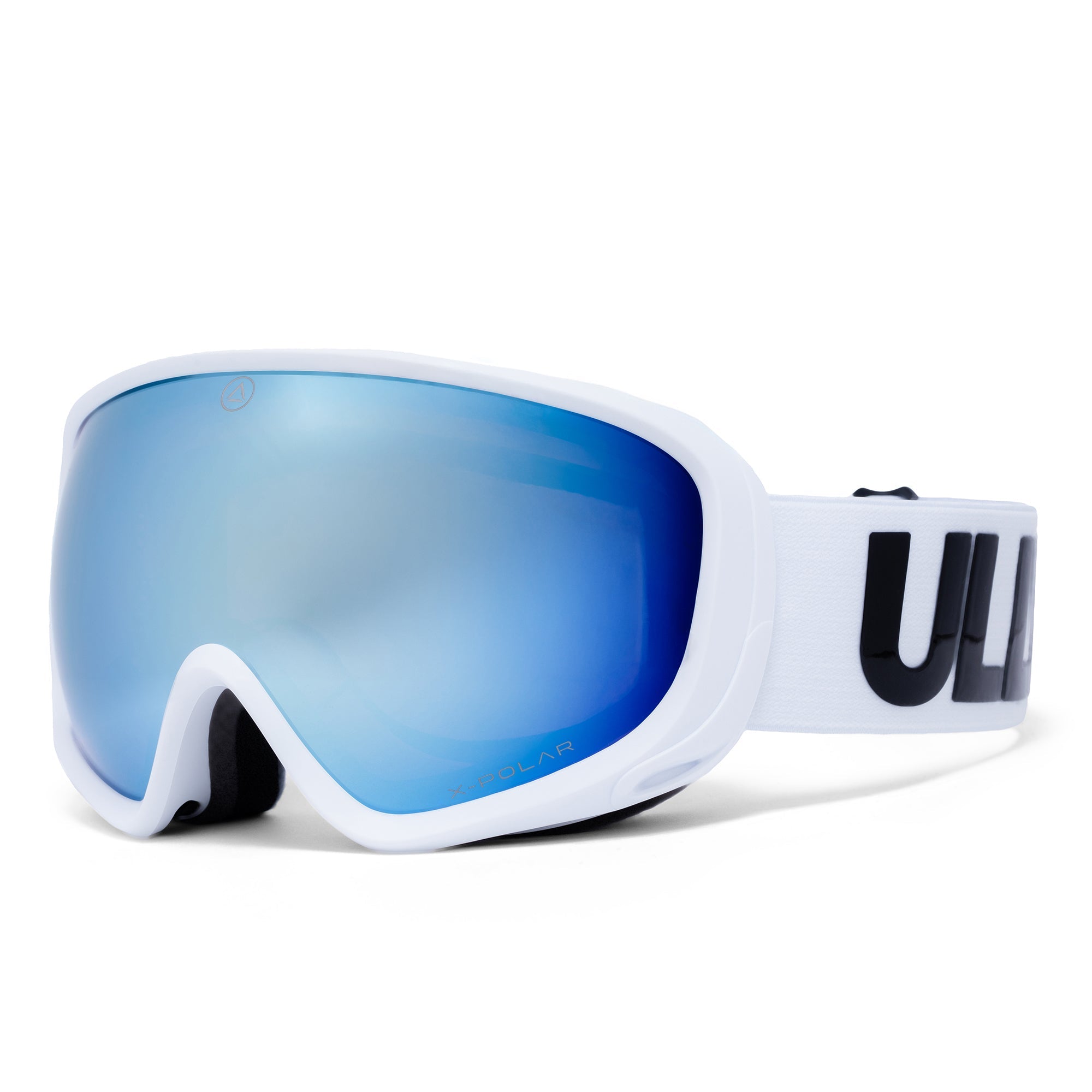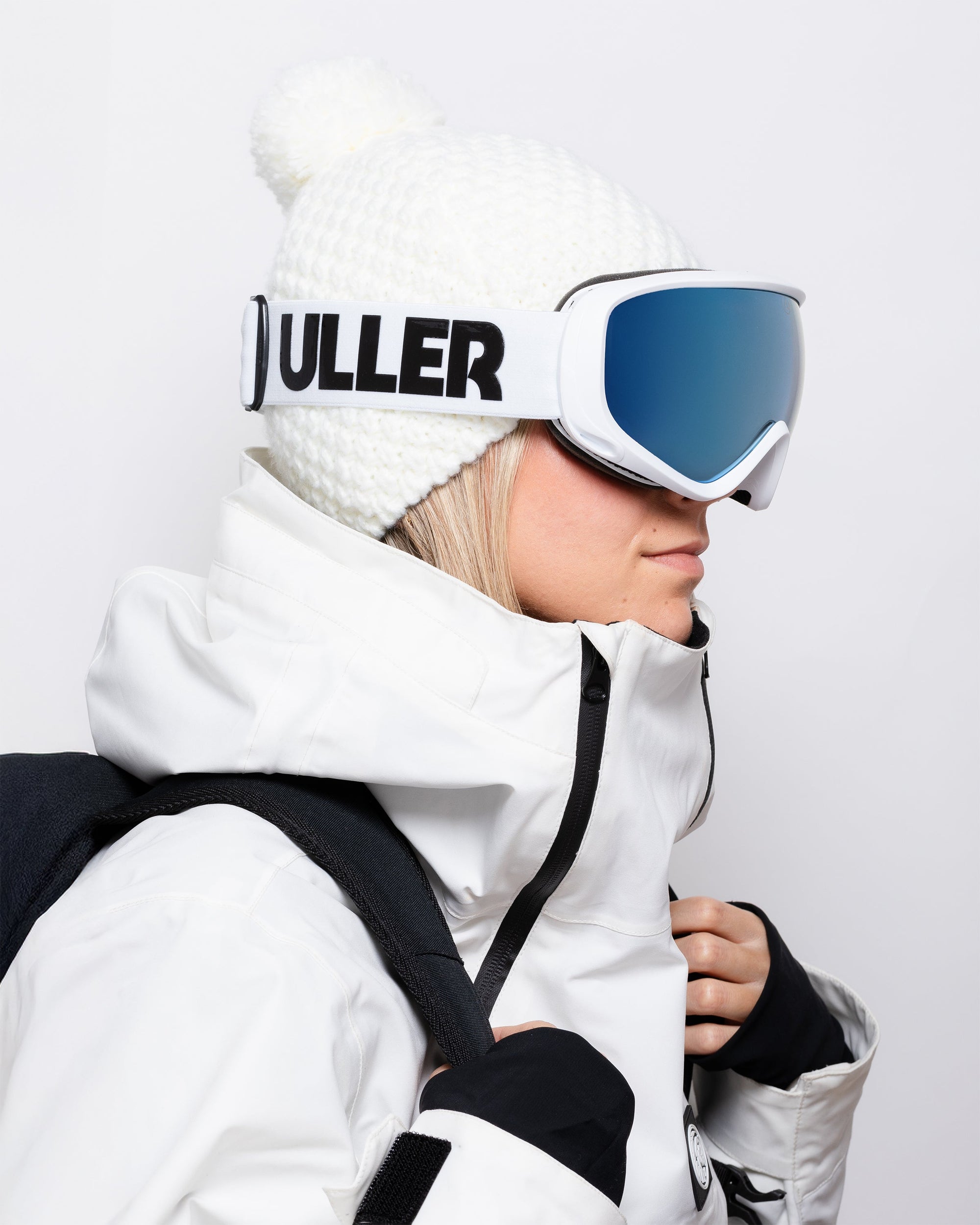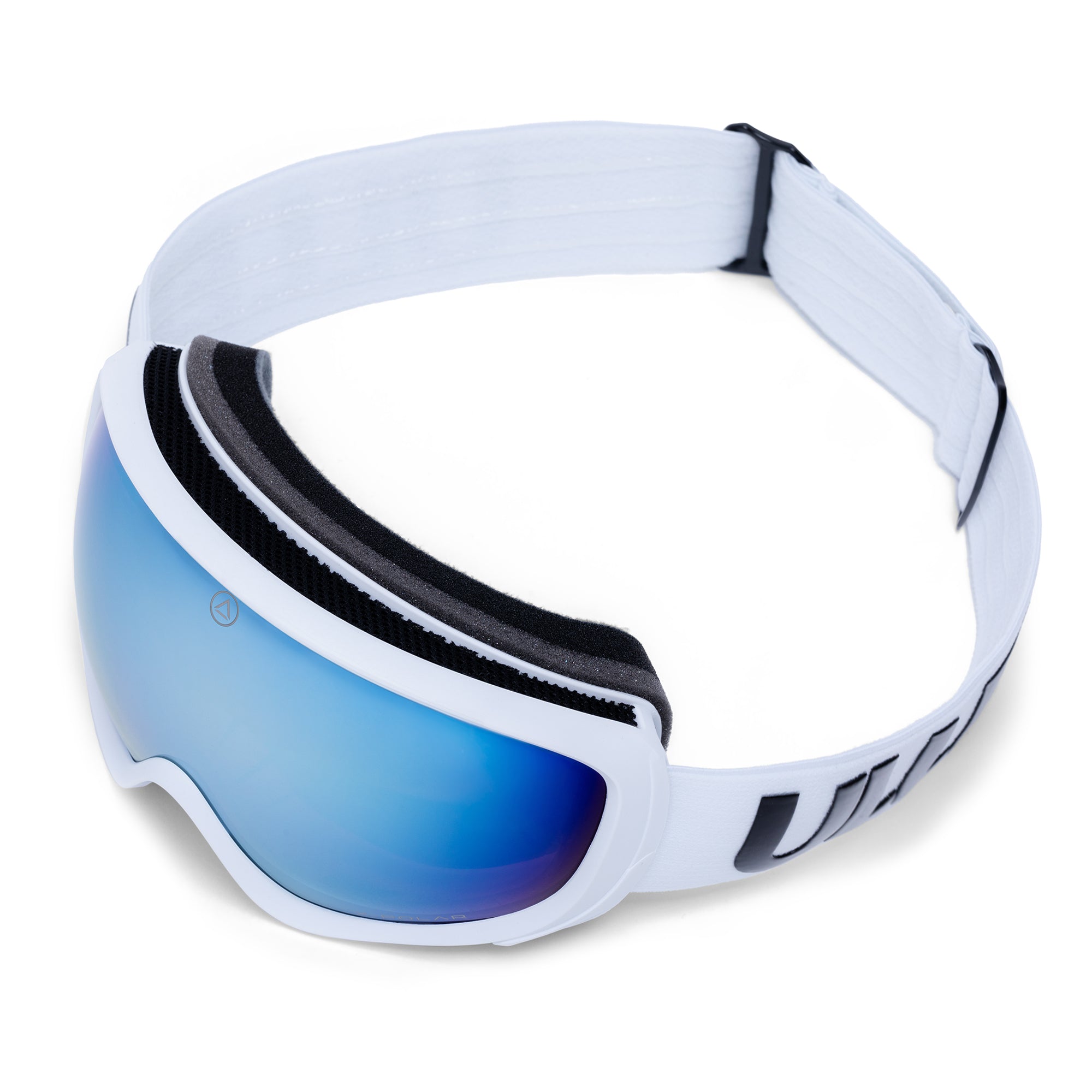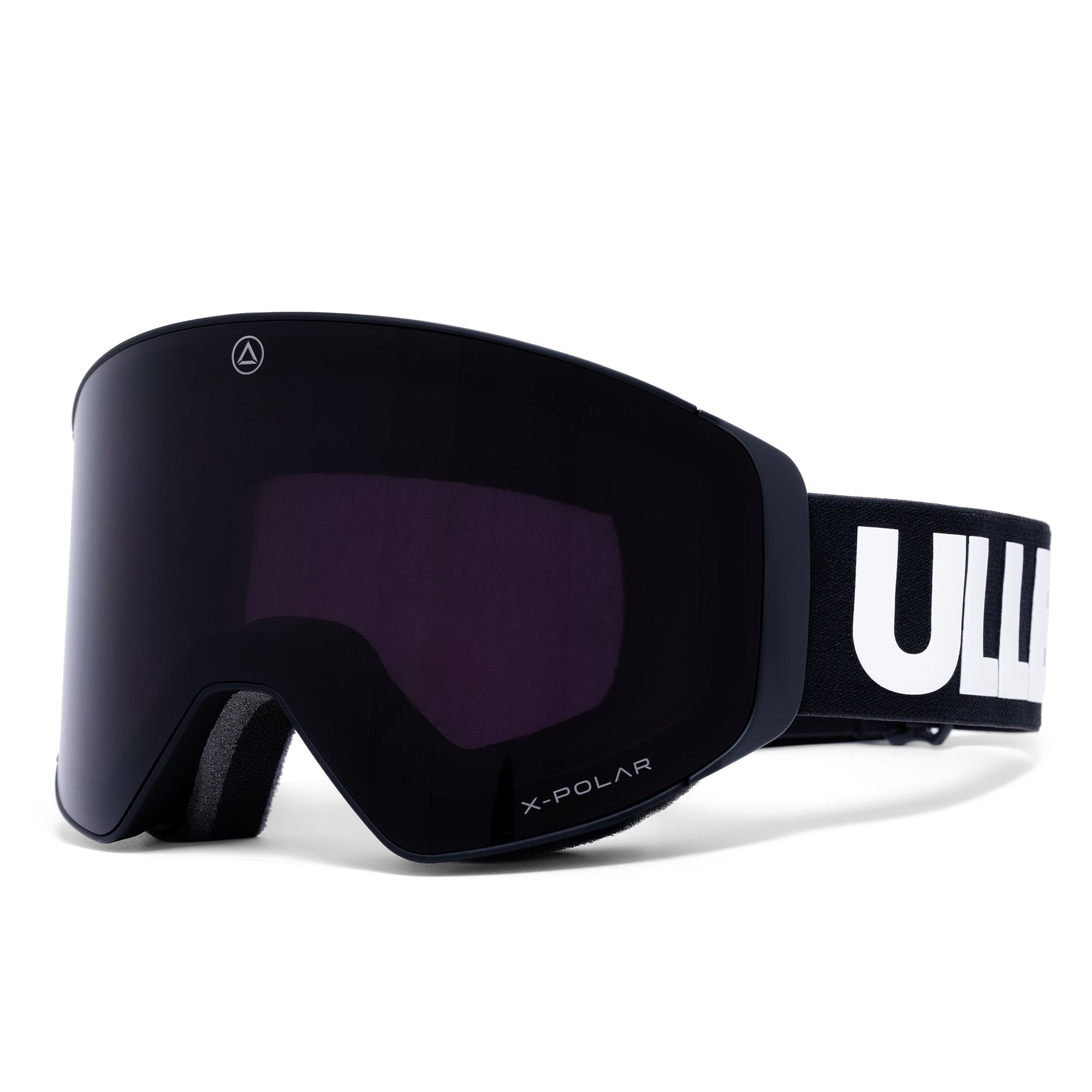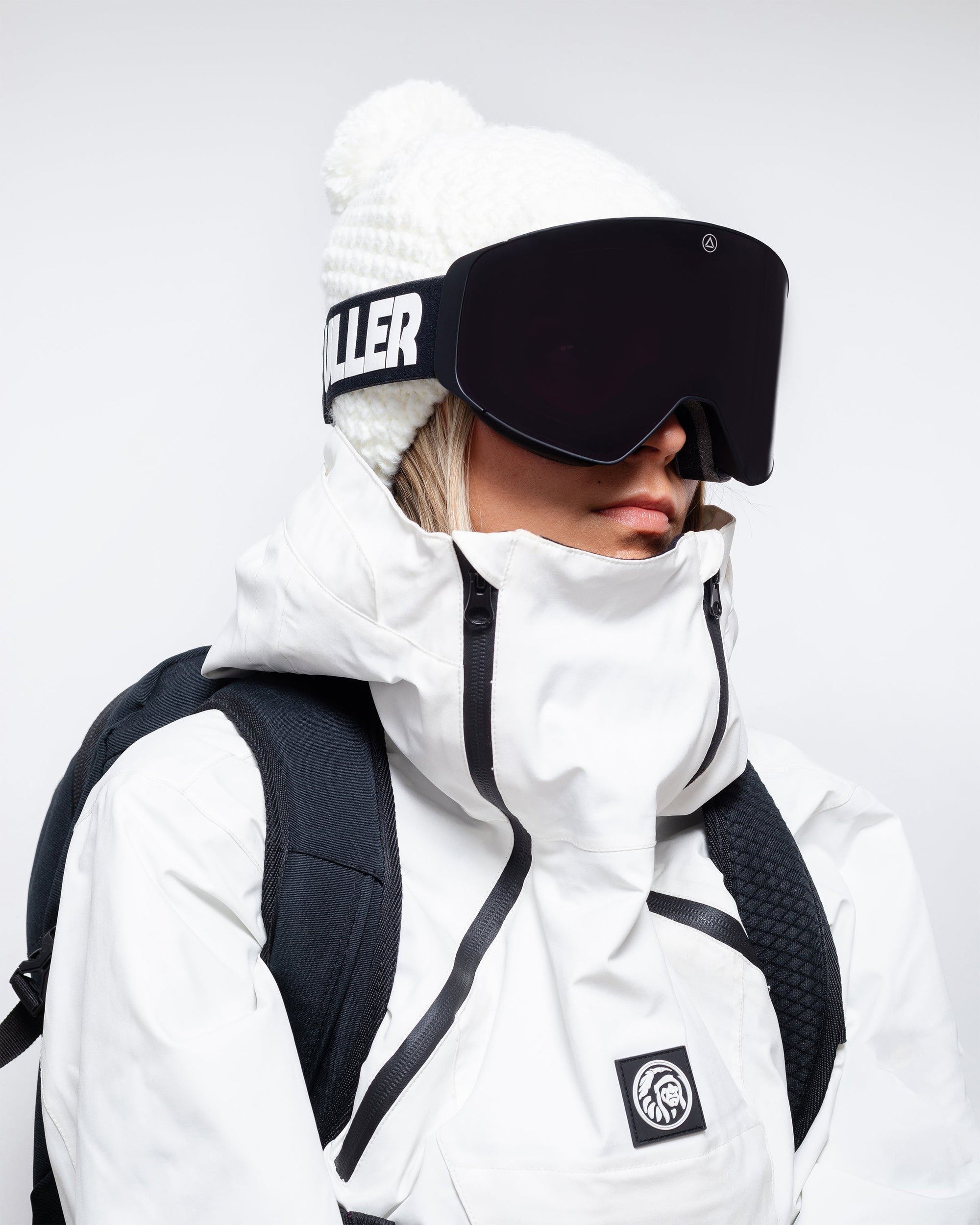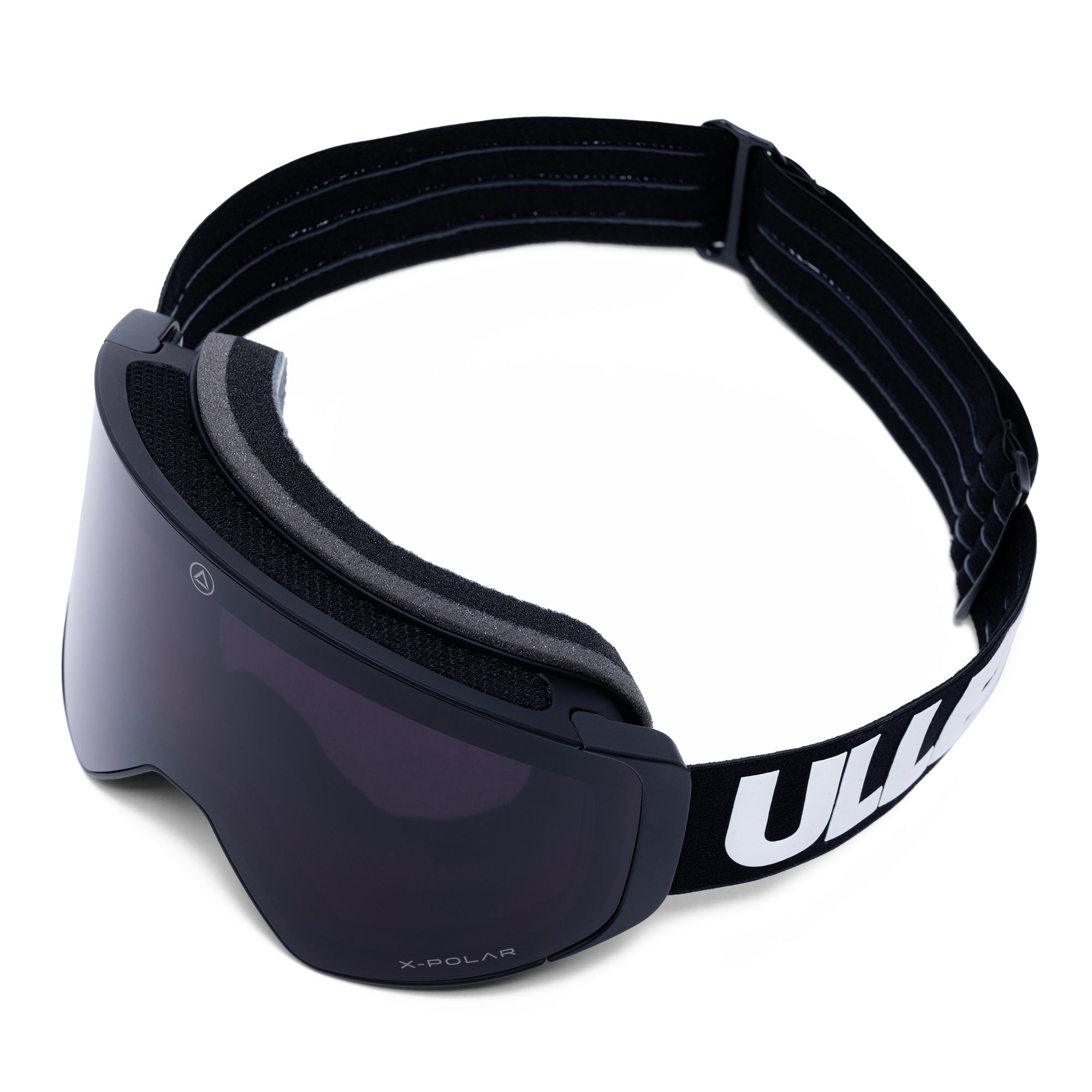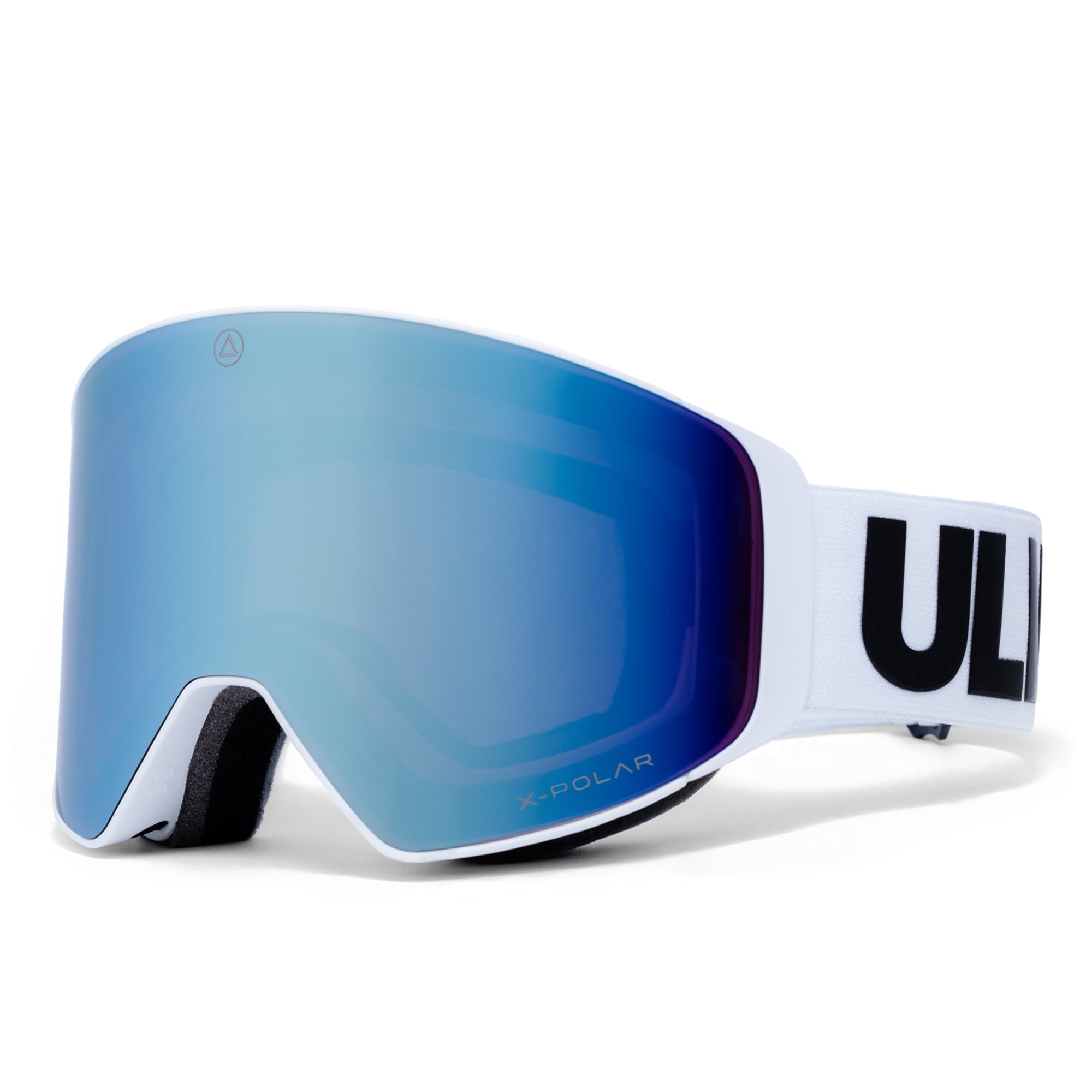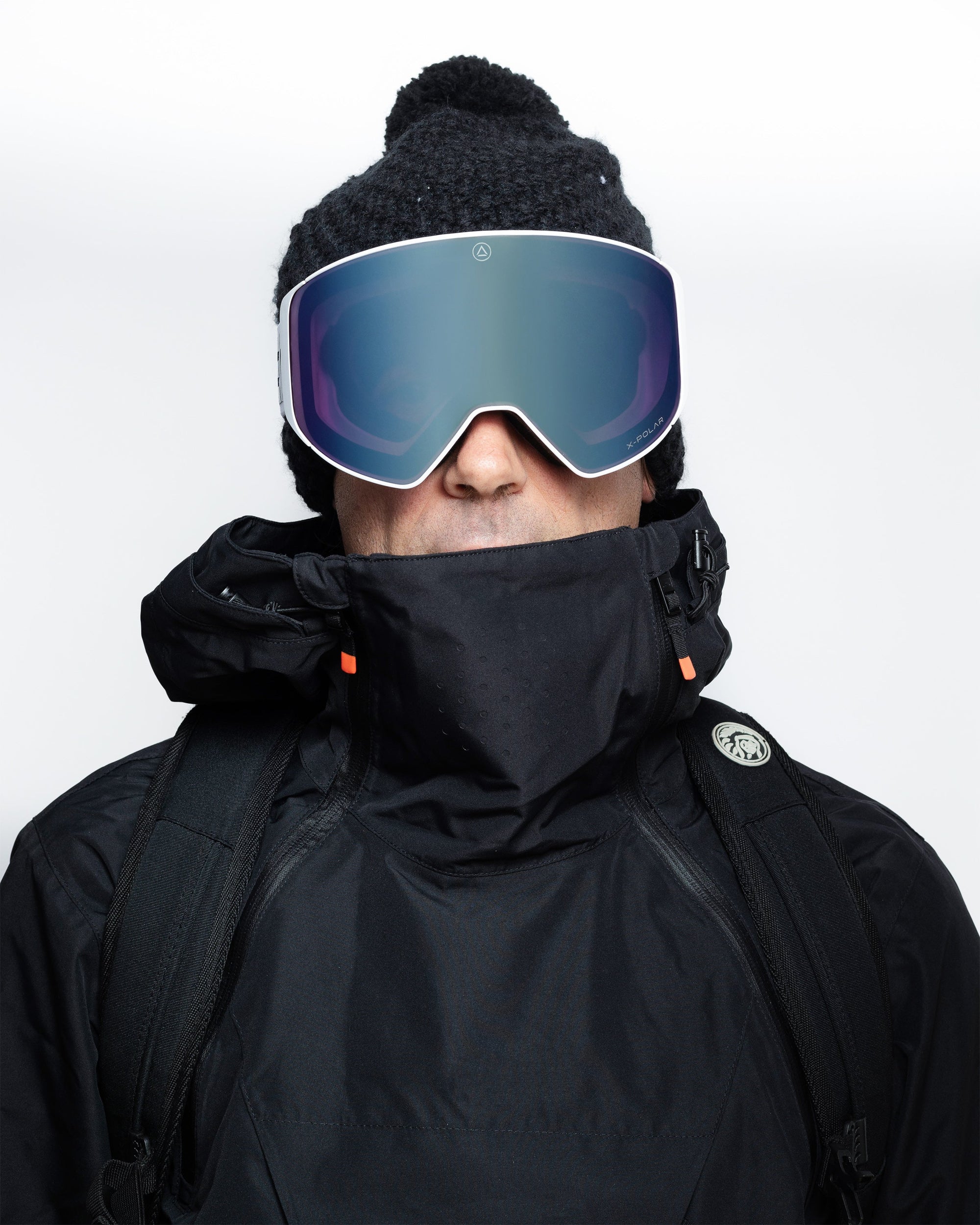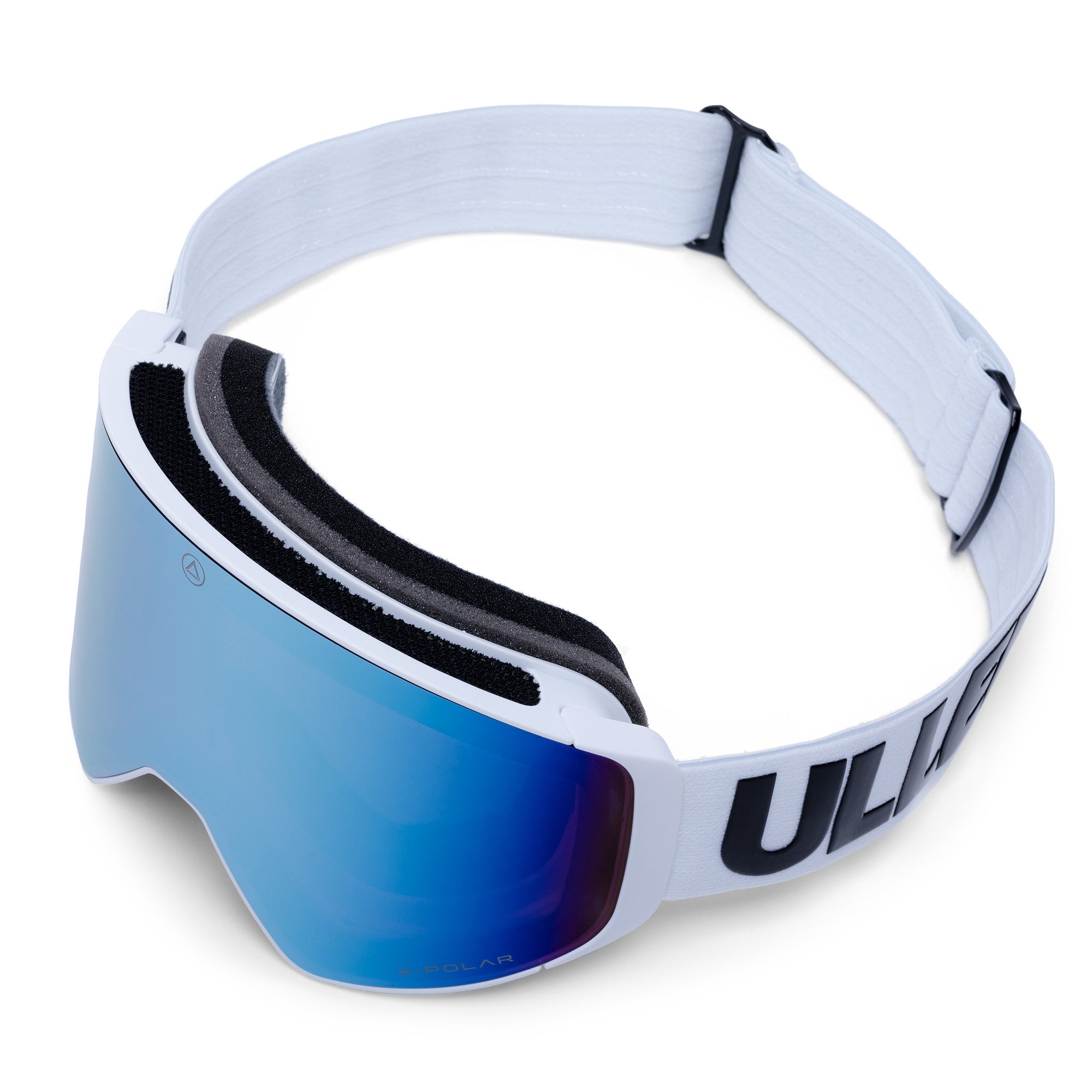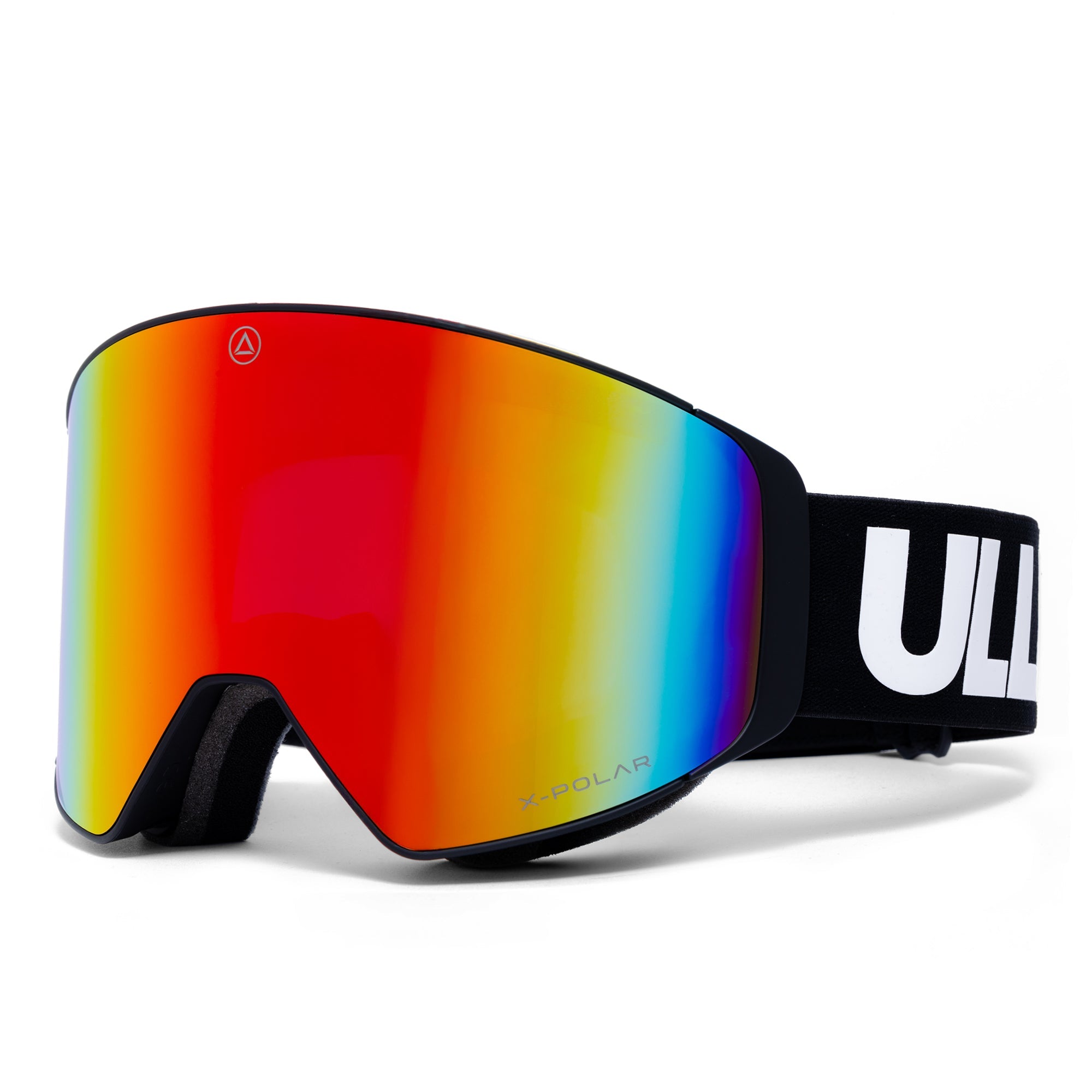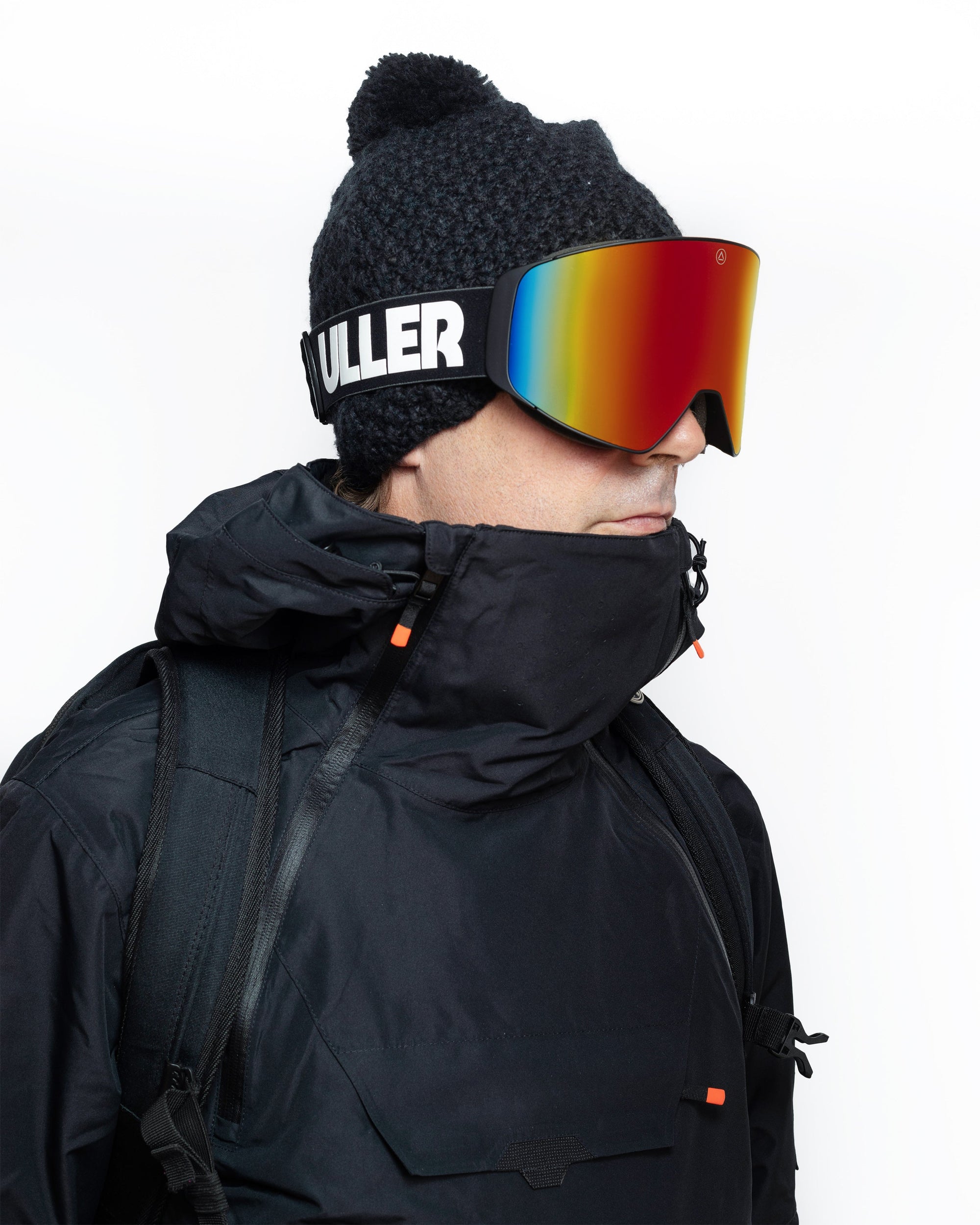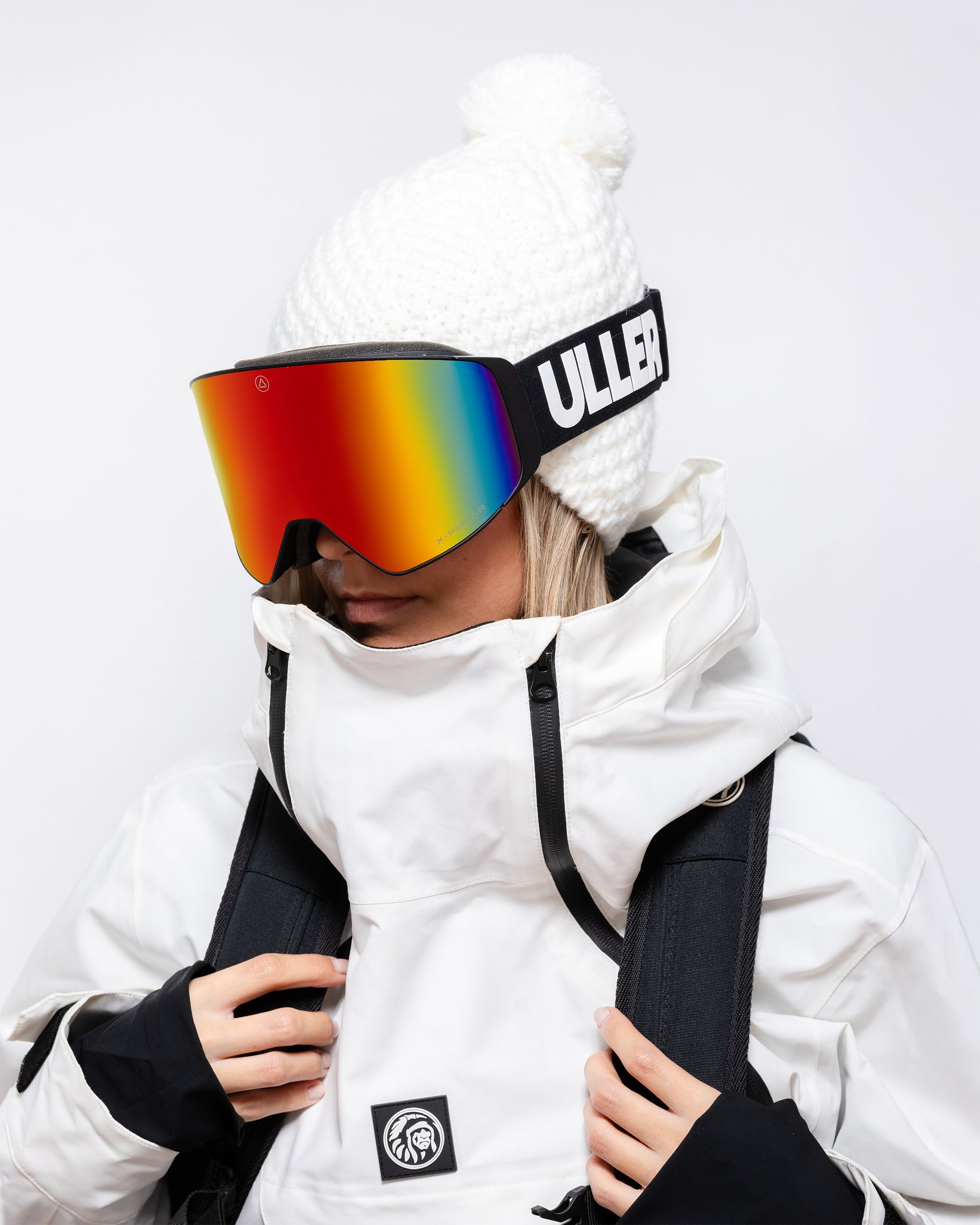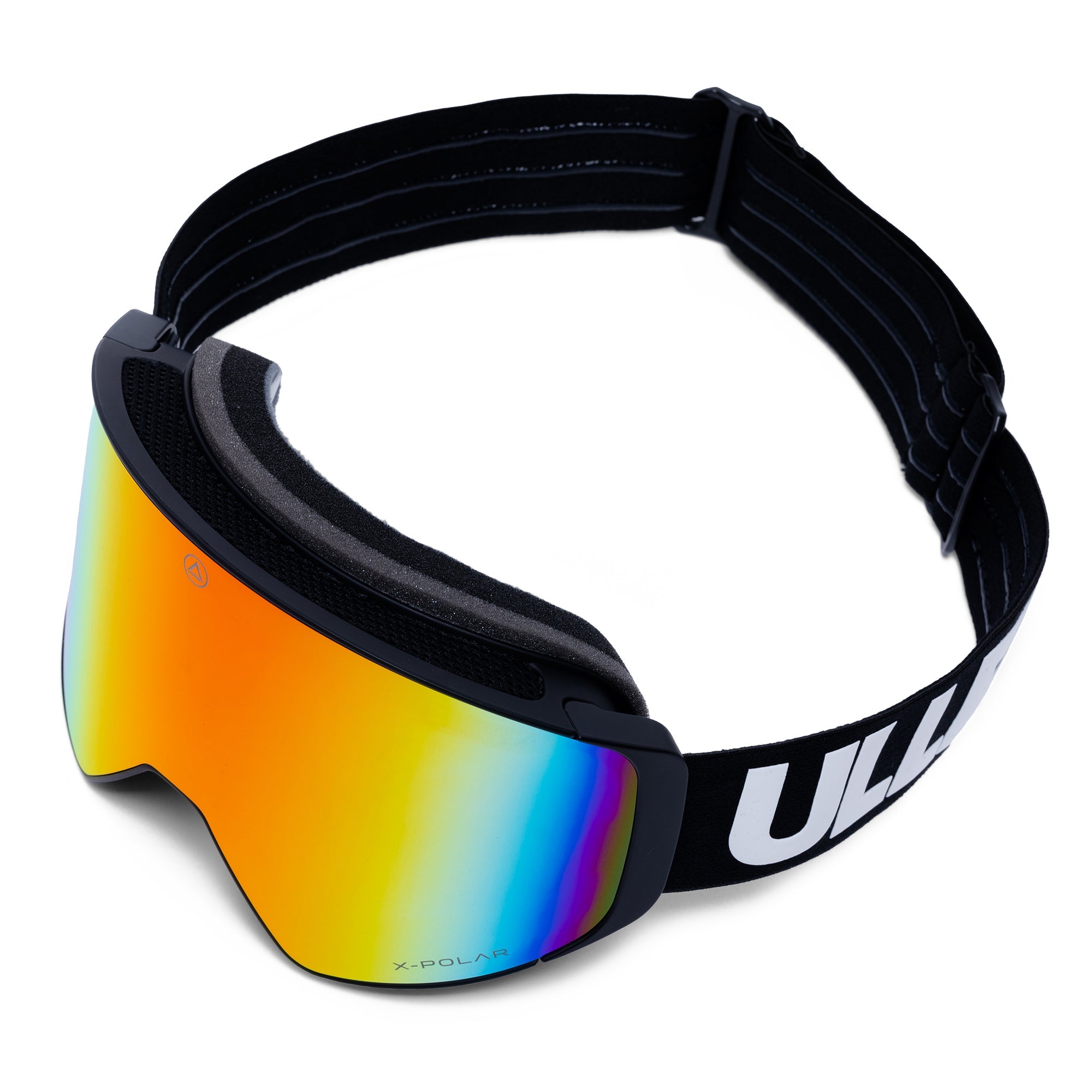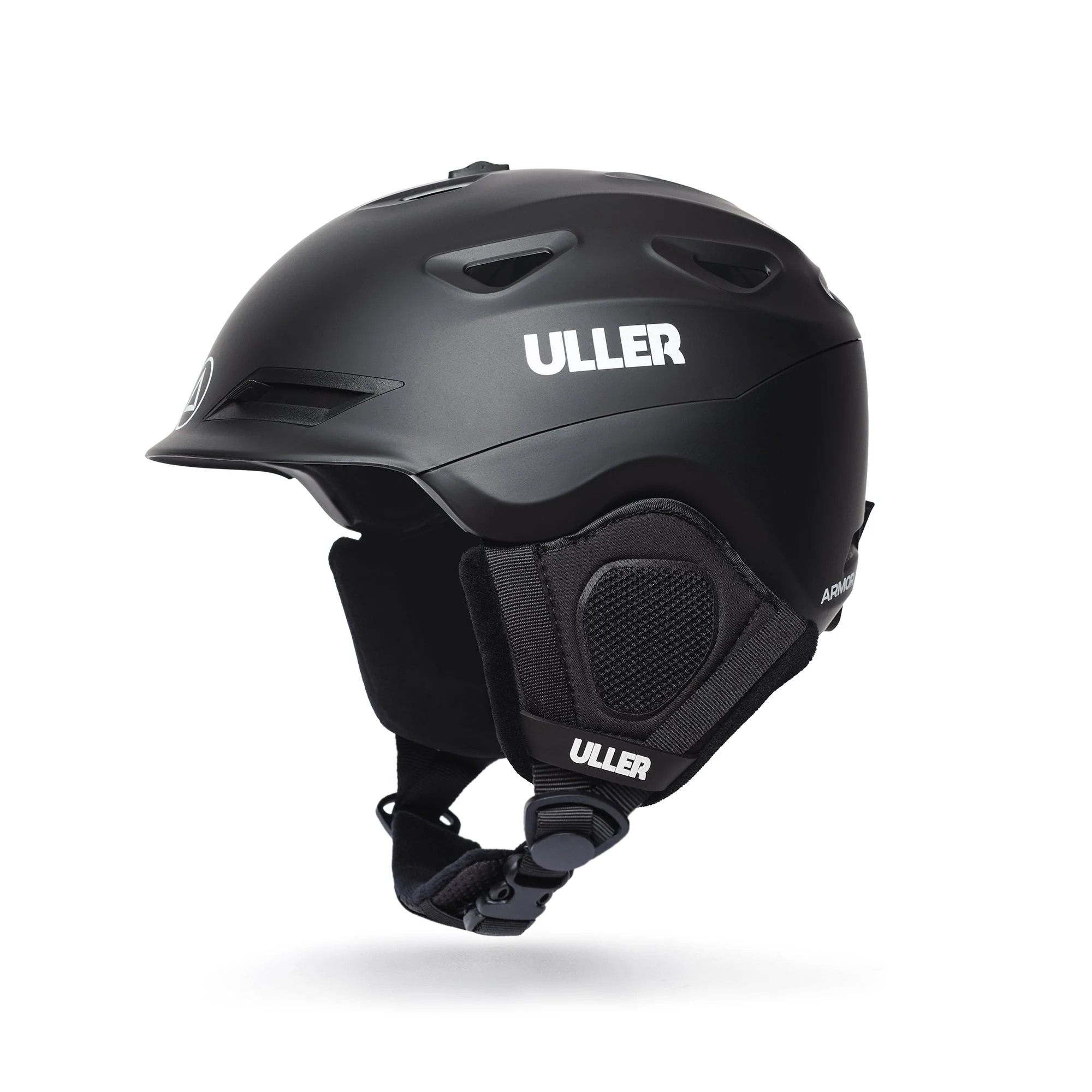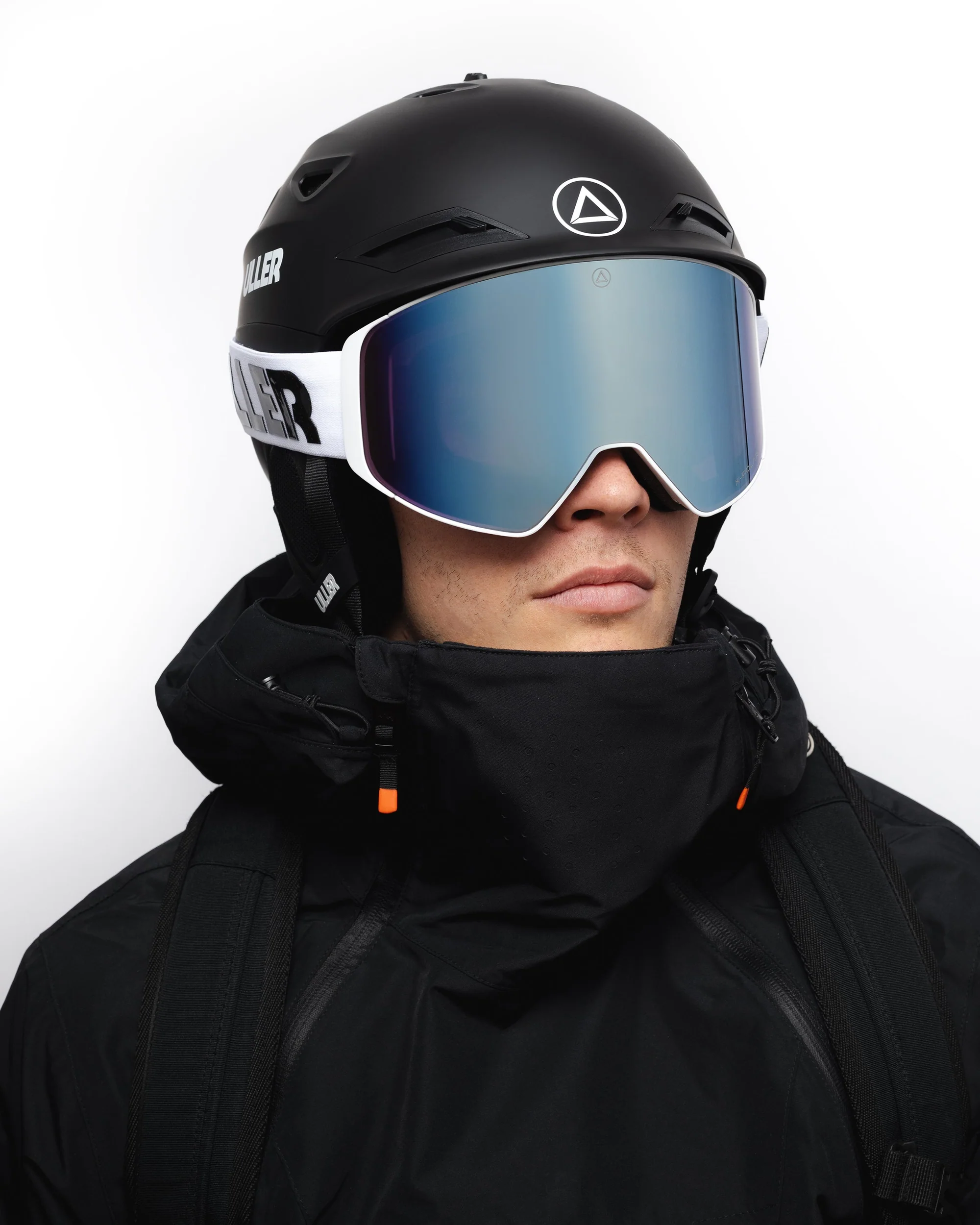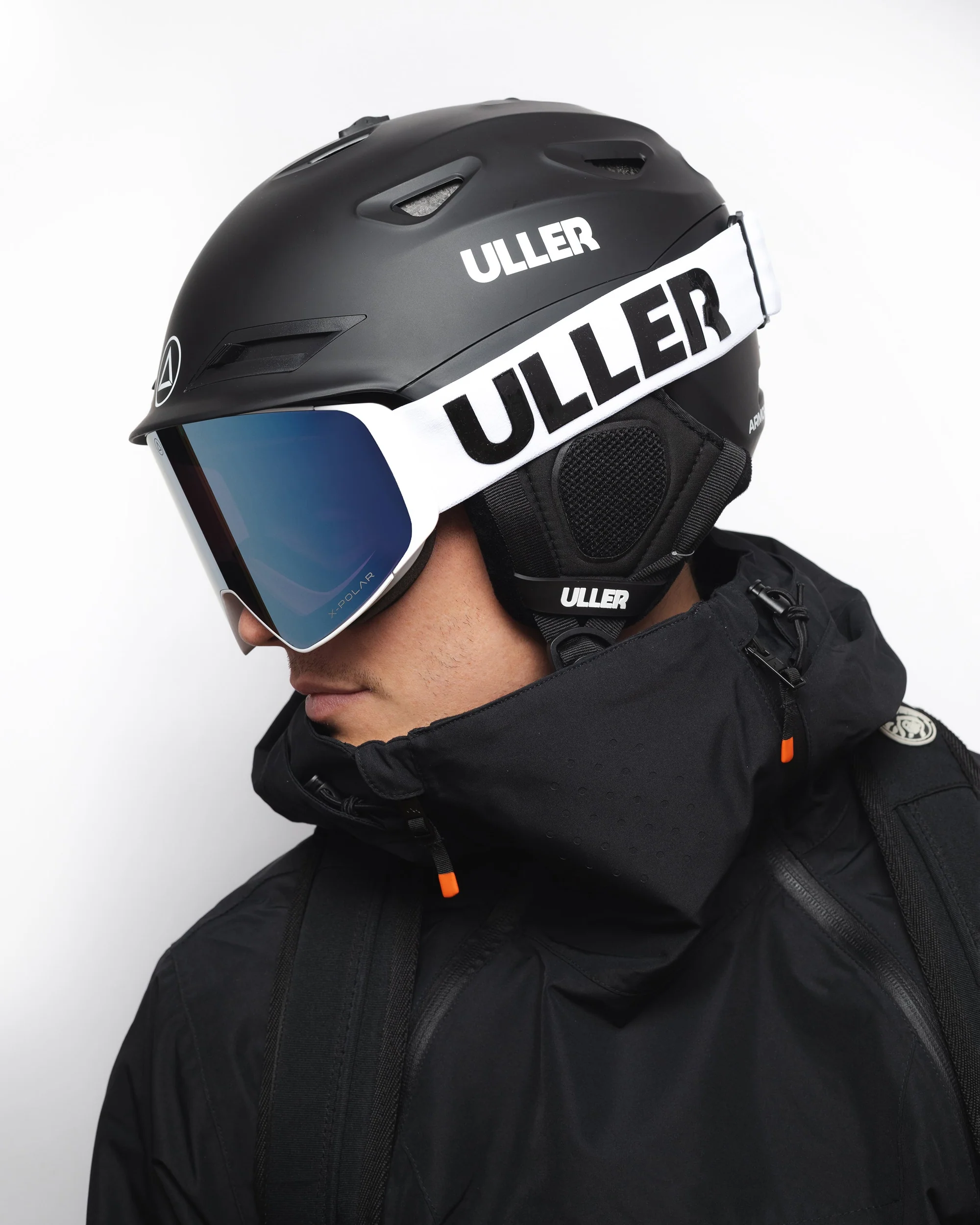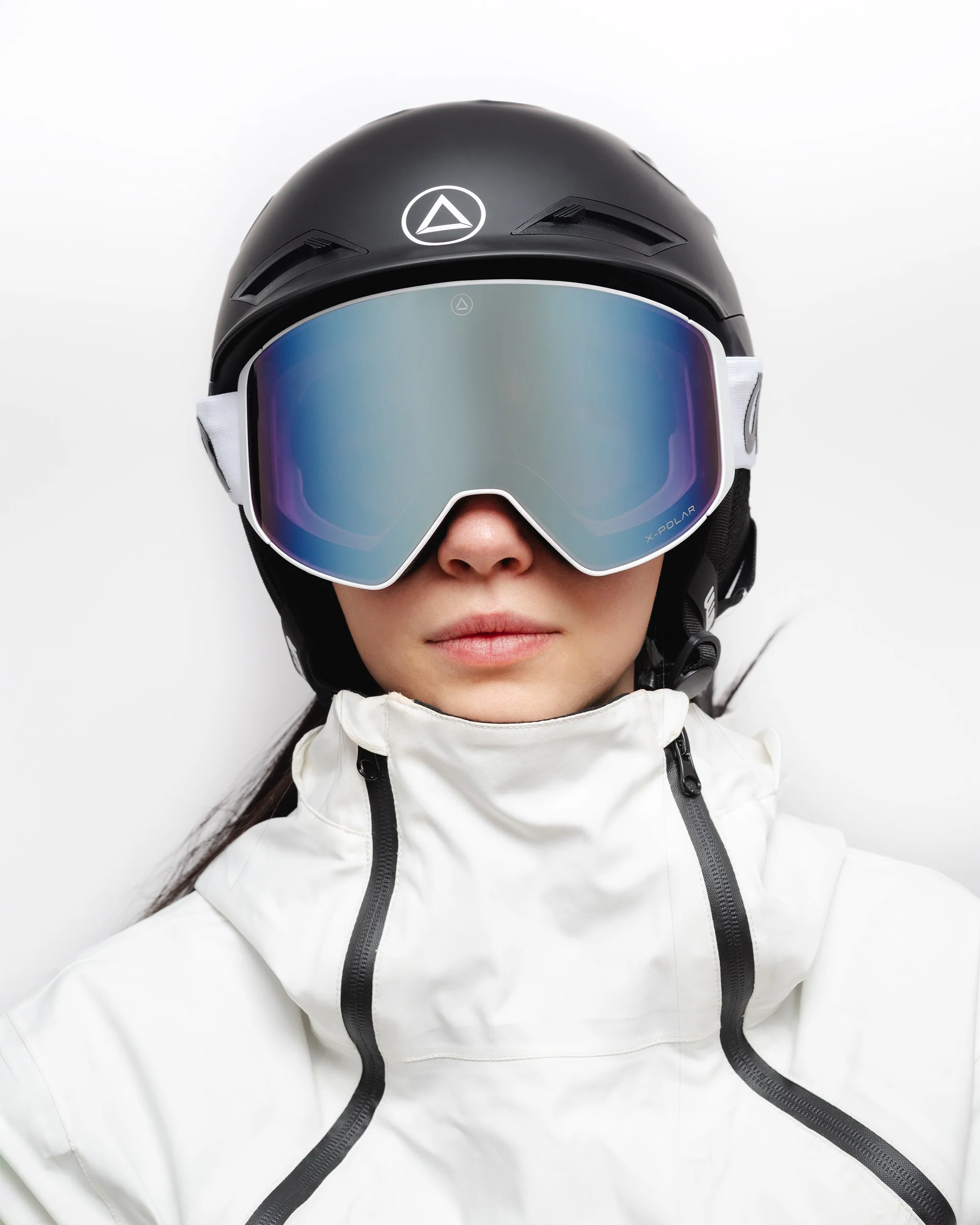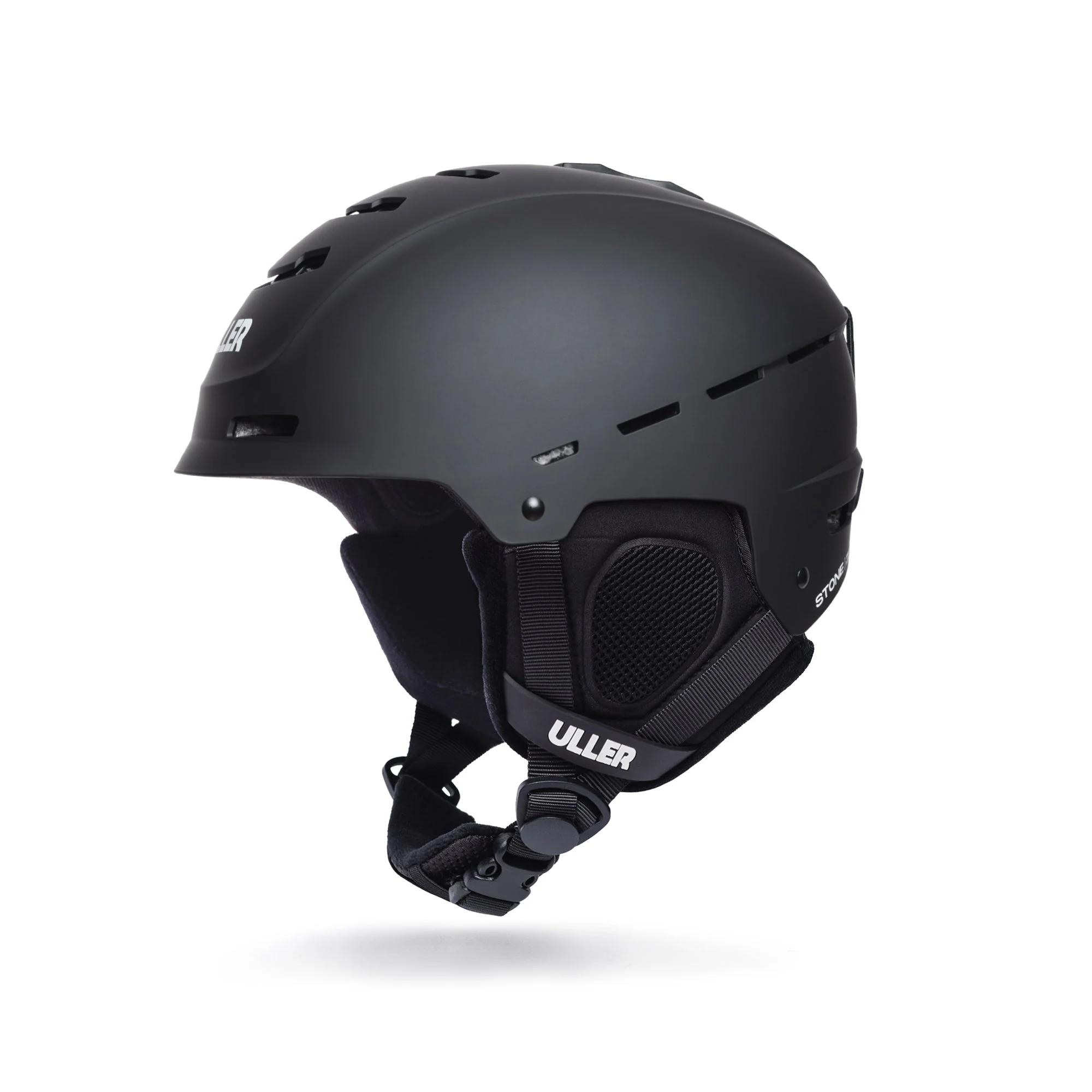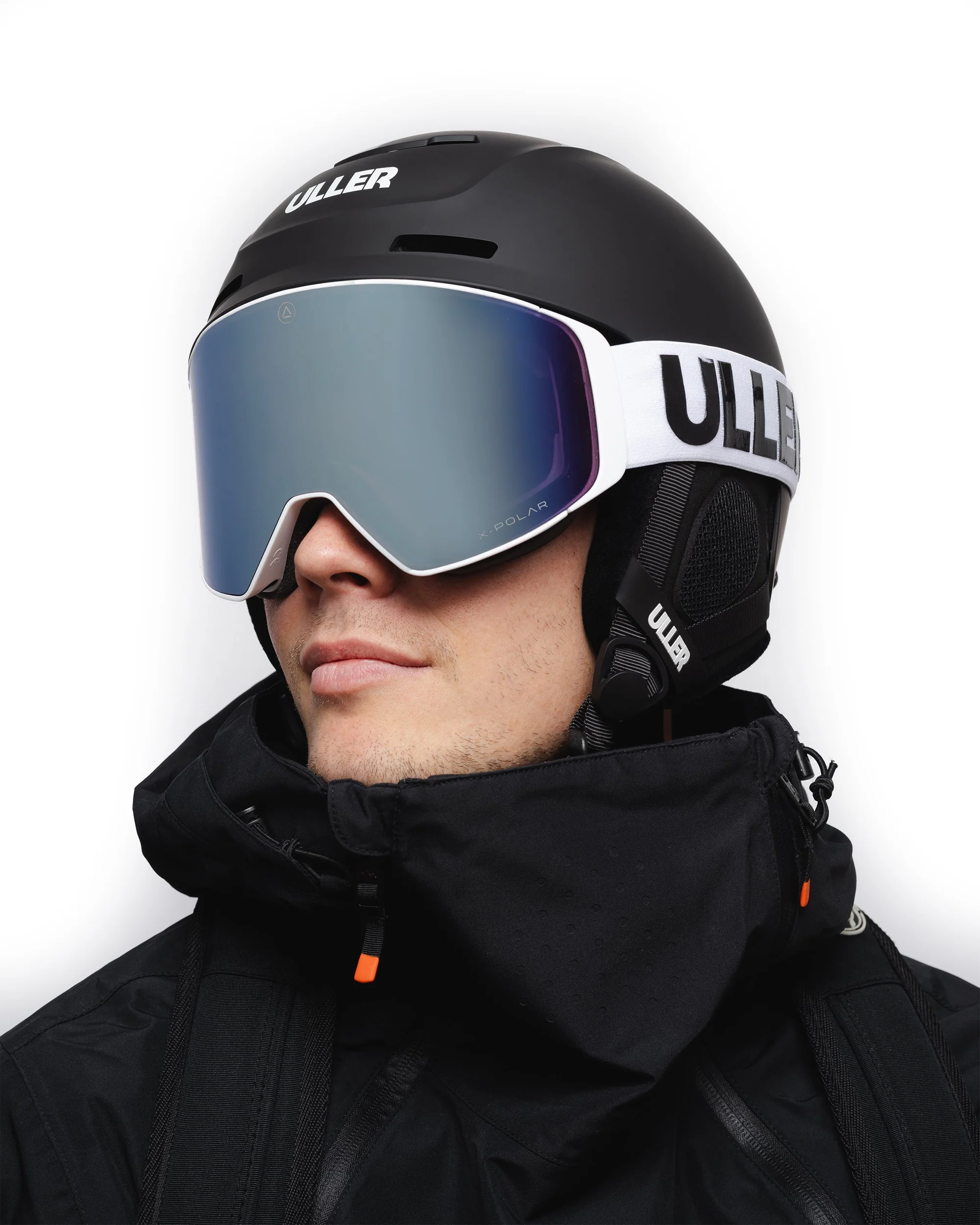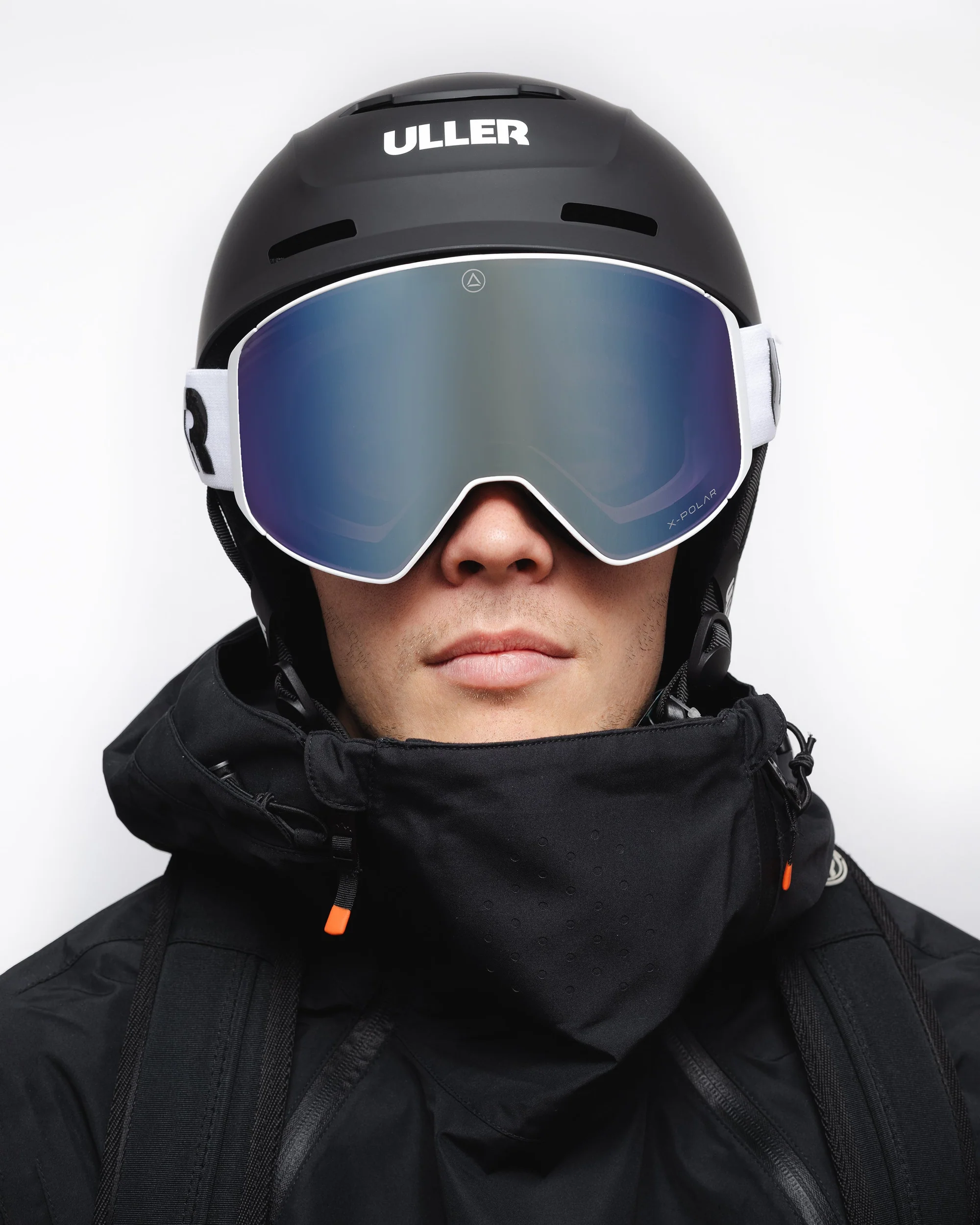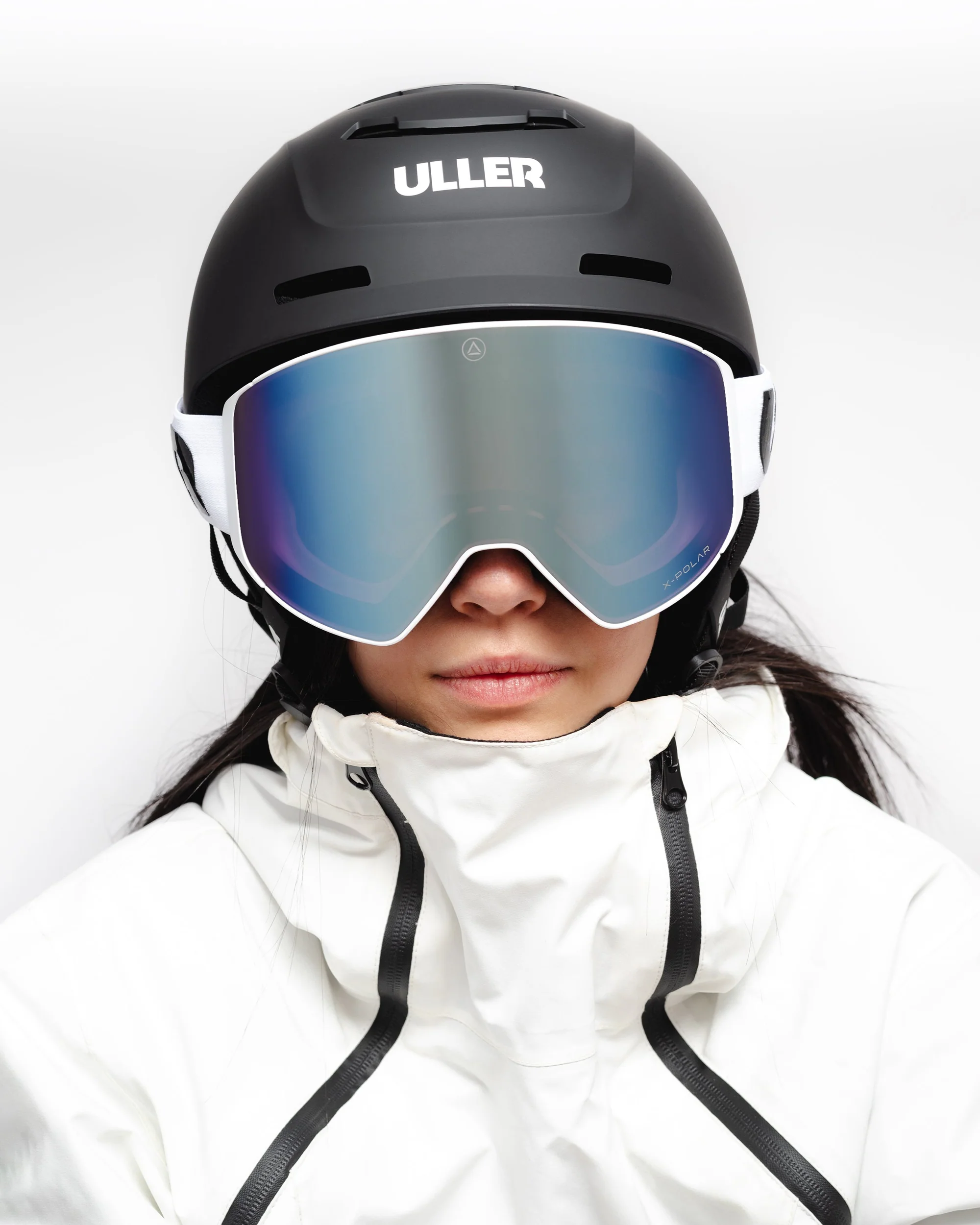Strength, adrenaline and pure cycling. Three things that without any doubt define the Tour de France (Le Tour de France), the mythical cycling race held annually between June and July throughout the French geography, and which belongs to the calendar of the UCI WorldTour within the highest category of international professional racing.
It is difficult to find someone who has never heard of this legendary sporting event in his life, or an inveterate cyclist who has never dreamed of winning the French Tour at least once. Without a doubt, it is the goal of the year for the greatest and the dream of every potential cyclist!
If you are a sports lover as much as we are, surely it is a competition that you have been tracking for years, or perhaps, you are such a fan that you have one or another legendary poster at home, which you dust off from time to time to remember the epic moment in which cycling stars and legendary legends such as Jacques Anquetil, Eddy Merckx, Bernard Hinault or Miguel Induráin achieved glorious victory, breaking records and astonishing the millions of viewers who watch and televise the competition year after year.
But now we ask ourselves… Do you think you know absolutely everything about the Tour de France? Keep reading and discover 10 things you need to know about this incredible competition, from the most basic and essential, to the most curious historical facts about the Tour.

1. THE MOST FAMOUS SPORTS RACE OF ALL
What is the Tour de France?
C´est le Tour, the most emblematic race, the race of races. It was born as the great dream of a cyclist who would not stop until he offered other cyclists the opportunity to tour France by bike, and it goes down in history as the maximum opportunity to provide prestige to professionals in one of the most wonderful, demanding and liberating sports. of all.
Le Tour de France, or simply “Tour”, is a professional road cycling tour that has been held in stages in France every year since 1903. It is known as the oldest race of the three "Grand Tours" of cycling, along with the Giro d'Italia and the Vuelta a España. In addition, he was awarded the Prince of Asturias Award for Sports in 2003.
The Tour de France is currently considered the most famous and important race in the world, not only in the cycling category. In fact, since its creation at the beginning of the last century, the race has been interrupted only twice and due to extraordinary situations after the great wars. Incredible, isn't it?
2. TOUR DE FRANCE 1903: “The Champions. The Race. The Fans”
The Tour de France is not only one of the most prestigious competitions in the world, it is also one of the longest running! Did you know that the first edition was created in 1903 to increase the circulation of the French newspaper L'Auto-Velo? How can this be?
What was the first edition of the Tour de France?
In 1903, the first edition of the Tour de France began, with a route of only six stages and a total of 2,428 km. The first Tour de France, which took place from July 1 to 19 of that year, was sponsored by the French newspaper L'Auto-Vélo (now L'Équipe) and its route was designed by Henri Desgrange, the director and editor-in-chief of said newspaper. In fact This great competition was created with the aim of increasing the circulation of L'Auto newspaper! Furthermore, even long before the competition began, Desgrange was already quite a well-known figure in turn-of-the-century French society, notable among his cycling exploits were hour records at the historic Buffalo Velodrome in Paris. Desgrange had signed, in fact, a record of 35,325 km in 60 minutes on the Parisian ellipse, on May 11, 1893; the first in history. Although Desgrange studied law, that didn't stop him from creating a bike race across France! He finally makes it a reality together with his cycling editor Geo Lefèvre at L'Auto to also help improve circulation of the newspaper, and increase sales on the road, killing two birds with one stone.
Another curious fact is that, at that time, the cyclists participating in the Tour de France were not required to compete in the six stages that the tour consisted of, and they had between 2 and 3 days of rest between each one. They weren't grouped into teams either! In the past it was a purely individual competition, and they had to pay 10 French francs to be able to compete in the general classification, or they could also pay only 5 French francs to enter a single stage.
This first Tour de France began in Montgeron, very close to Paris, where 60 cyclists took the start (of which 49 were French, four Belgians, four Swiss, two Germans and one Italian) who they covered the inaugural stage of 467 km to Lyon. The final winner was the legendary cyclist Maurice Garin.
In case you were wondering: after the competition. The newspaper's circulation increased six times! Therefore, the owners of L'Auto-Vélo consider it wise to replicate the following year, and the following year, and the following… What a marketing strategy!

3. MAURICE GARIN: WINNER OF THE FIRST EDITION OF THE TOUR DE FRANCE
The favorite to win the competition was, in fact, Maurice Garin, who was the winner of the first edition of it. Maurice Garin was born in Arvier, Italy, on March 3, 1871, and died in Lens, on February 19, 1957. He was a French cyclist who, without a doubt, went down in sports history as the first winner of the Tour de France that July 1903. In that edition, 32-year-old Maurice Garin claimed the first stage and was able to retain first place for the remainder of the competition. In addition, he was victorious in the last two stages, finishing with a margin of almost three hours over the next rider. Not bad, huh?
Despite being born in Italy, Maurice Garin became a French national in 1901. It was in fact in France where he lived most of his life after emigrating with his family. His nicknames were "petit ramoneur", "le petit matelot" and "le bouledogue blanc" due to his short height and weight (1.62 m and 60 kg) and because he worked as "ramoneur" (chimney sweep, in French) in different French cities, a humble trade for the time. Skinny and all, Garín achieved victory in what would be the most famous cycling competition in all of history!
But sometimes what happens, Maurice was disqualified from the Tour de France in its next edition (1904) for traveling by car several sections of the route, which is why he was suspended for two consecutive years. He returned to compete after that until he officially left cycling after twenty victories. In fact, he was declared one of the most outstanding cyclists in history and in 2002 he was elected to be part of the Inaugural Session of the UCI Cycling Hall of Fame.

4. TOUR DE FRANCE: AN ARDUOUS JOURNEY THROUGH MEDIUM AND HIGH INTENSITY STAGES
What are the stages of the Tour de France?
The Tour de France is a race that takes place in different stages throughout the French geography, contemplating moments of greater and lesser intensity, including flat routes, medium mountains, mountains and individual time trial stages.
Over the years, the stages have increased in quantity and also in intensity. Thus, each new edition ends up being different and, in theory, more difficult as well. In fact, 4 cyclists have died trying to complete the Tour: Adolphe Heliére (1910), Francesco Cepeda (1935), Tom Simpson (19677) and Fabio Casartelli (1995). Without a doubt, it is a great merit and honor for the competitors to demonstrate their skills during the different stages, and also to pedal for the victory of this great competition. If we look back in time, the youngest winner of the Tour de France in its entire history was Henri Comet in 1904, who was 19 years old at the time. Curiously, that same year the oldest cyclist in the entire history of the Tour de France also competed: Henri Paret, at 50 years of age.

5. WEARING THE YELLOW JERSEY, AN HONOR!
What is the jersey in the Tour de France?
The word “Maillot” literally translates to “jersey” in French. To this day, the Tour de France jersey is the term used to distinguish the different leaders of the various classifications in the competition, represented (precisely) with jerseys of different colors. Despite the fact that there are several jersey designs with different meanings, yellow has become one of the most honorary, since it determines the winning leader who, up to that moment, has had the lowest accumulated time in the stages, even having added and subtracted any time bonuses or penalties.
Tour de France jersey: colors and meanings.
- The yellow jersey : identifies the leader of the general classification of the event. It was created in 1919 and its color was a tribute to the newspaper L'Auto, which used yellow pages.
- The green jersey: identifies the leader of the points classification of the event. It was created in 1954 for the fiftieth anniversary of the test. Its color was a tribute to the newspaper Le Vélo which used green leaves.
- The red polka dot jersey: identifies the best climber in the event.
- The white jersey: is given to the best ranked youngster in the Tour de France. It is determined by looking at the yellow jersey classification, and discarding riders born after the deadline. To opt for the white jersey, the participant must be under 26 years of age on January 1 of the year of the Tour in question, or turn 26 in that year.
- The red jersey: was awarded to the winner of the hill or intermediate stage classification. It began to be used in 1984 but, after being considered repetitive, it was canceled in 1989.
6. THESE ARE THE MYTHICAL MOUNTAIN PASSES IN THE TOUR DE FRANCE!
We also leave you with a great list of the most mythical mountain passes of the Tour de France of all, some because of their history, others because they are the toughest, and others because they hide interesting mysteries. Do you know some of them? Here we leave you our list!
Alpe d’Huez: ski resort founded in 1930. For the Tour de France it is known as the mountain of the Dutch.
- Location: Isere, north of the Alps, France.
- Altitude: 1850 m.
- Length: 13. 1 km.
- Mean slope: 8.19%
- Maximum slope: 12%.
La Croix de Fer: one of the hardest and most mythical climbs of the Tour de France.
- Location: Alps, Savoy.
- Length: 29.5 km.
- Altitude: 2067 m.
- Unevenness: 1617 m
- Mean slope: 5.07%
- Maximum slope: 12%
Mont Ventoux: A pass with an anthological and dramatic climb. Legend has it that the Swiss Ferdi Kubler went crazy there during his 1955 climb. Also, Tour leader Tom Simpson died on the Ventoux in 1967.
- Location: Vaucluse/ Provence-Alpes-Côte d'Azur, France.
- Altitude: 1912 meters.
- Length: 21.2 km.
- Mean slope: 7.fifteen%.
- Maximum slope: 12%.
The Peyresourde: mountain pass in France in the central Pyrenees, between Arreau and Bagnères-de-Luchon. It was first climbed in the 1910 Tour de France.
- Location: Arreau and Bagnères-de-Luchon.
- Altitude: 1569 m.
- Length: 13.2km.
- Mean slope: 7%.
- Maximum slope: 12%.

The Tourmalet: historically known for its hardness. In the Tour de France it was climbed for the first time in 1910.
- Location: Hautes Pyrénées, Midi Pyrénées, France.
- Altitude: 2215 meters.
- Length: 18.8 km.
- Mean slope: 7.4%.
- Maximum slope: 13%.
Aubisque: the port located in the Pyrenees, specifically in the Atlantic area, belonging to the Aquitaine region, located in the southwest of France.
- Location: From Laruns, / Hautes Pyrénées, France.
- Altitude: 1709 meters.
- Length: 16.5 km.
- Mean slope: 7.2%.
- Maximum slope: 13%.
The Izoard: highly difficult, with several horseshoe curves in the central section. It honors Fausto Coppi and Louison Bobet with a monolith on top.
- Location: From Guillestres, / Hautes Alpes, France.
- Altitude: 2360 meters.
- Length: 15.9km
- Mean slope: 6.9%
- Maximum slope: 14.5%.
The Galibier: mountain pass located in the south of France. It connects Saint-Michel-de-Maurienne and Briançon via the Télégraphe and the Lautaret.
- Location: By the port of the Telegraphe.
- Altitude: 2642 m.
- Length: 35.25km.
- Mean slope: 5.48%
- Maximum slope: 15%.
The Col de la Madeleine: mountain pass located in the French Alps, in the Savoy department; Normally closed from November to the beginning of June.
- Location: From Aigueblanche, Department of Savoy.
- Altitude: 1993 m.
- Length: 28.3km.
- Mean slope: 5.4%.
- Maximum slope: 14%.
The Col du Télégraphe: mountain pass located in the French Hautes-Alpes, between the Massif d’Arvan Villards and the Massif des Cerces.
- Location: From St. Michelle deMaurienne.
- Altitude: 1566 m.
- Length: 12.2km.
- Mean slope: 8%.
- Maximum slope: 15%.
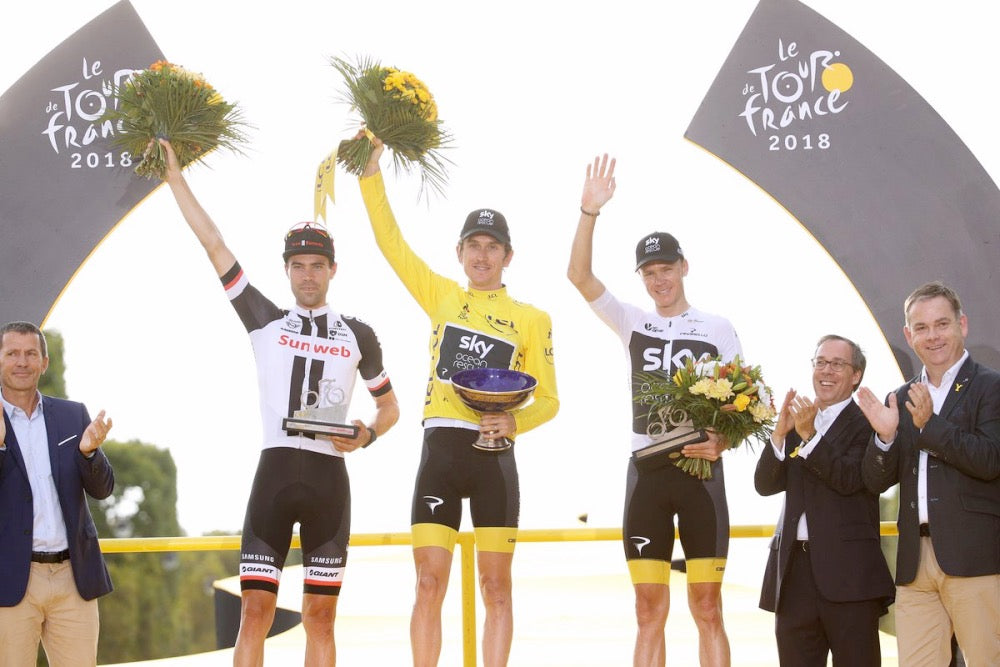
6. WHAT IT'S LIKE TO WIN THE TOUR DE FRANCE
Although it is not the highest paid sport in the world, it is true that cycling moves considerable amounts of money, especially when it comes to a competition as important as the Tour de France. In this case, prizes are awarded to cyclists in different categories. There are prizes for each stage and the general classification at the end of the Tour.
What happens if you win the Tour de France?
Although it is true that the organization of the Tour de France distributes millions of euros in prizes annually according to the different stages and categories, the winner of the Tour also obtains 1800 points for the Cycling Hall of Fame. . In this way, winning is not only a financial reward, it has also become the cycling event that awards its winner the most points.
7. THE BIGGEST WINNERS OF THE TOUR ARE THE FRENCH CYCLISTS.
Did you know that France is the country with the most victories but the last one dates back to 1985? It has a total of 36 historical wins, but it is progressively true, many other countries have known how to make their way to victory. Do you know which are the countries with the most victories in the Tour de France? Discover them here!
Tour de France: list of winners by country.
- France (36)
- Belgium (18)
- Spain (12)
- Italy (10)
- United Kingdom (6)
- Luxembourg (5)
- United States (3)
- Netherlands (2)
- Switzerland (2)
- Germany (1)
- Ireland (1)
- Denmark (1)
- Australia (1)
- Colombia (1)
- Slovenia (1)
Which cyclists have broken records in the Tour de France?
There are four cyclists who, in addition to having won the Tour de France, hold the record for victories in the competition with five wins each:
- Jacques Anquetil (1957, 1961, 1962, 1963 and 1964).
- Eddy Merckx (1969, 1970, 1971, 1972 and 1974).
- Bernard Hinault (1978, 1979, 1981, 1982 and 1985).
- Miguel Induráin (1991, 1992, 1993, 1994 and 1995).

9. SPAIN, ONE OF THE GREAT LEADERS OF THE TOUR DE FRANCE
In total, until 2021, Spain has achieved 12 victories in the Tour de France. Federico Martín Bahamonte was the first winner, in 1959. After that, there have been six Spanish cyclists who have achieved victory in the Tour. Among them, a well-deserved recognition is made to Miguel Indurain Larraya, for having been crowned champion five consecutive times. For his part, the first Spanish cyclist to win a stage in the Tour de France was Salvador Cardona in the 1929 edition. Since then, 64 cyclists and 2 Spanish teams have achieved a total of 129 stage victories.
Who have been the Spanish winners of the Tour de France throughout history?
- Miguel Induráin (1991, 1992, 1993, 1994 and 1995).
- Alberto Contador (2007 and 2009).
- Federico Martín Bahamontes (1959).
- Luis Ocana (1973).
- Pedro Delgado (1988).
- Oscar Pereiro (2006).
- Carlos Tailor (2008).
The Spaniard with the most victories in the Tour de France: Miguel Induráin Larraya.
As we have mentioned, the Spaniard with the most victories in the Tour de France is none other than Miguel Induráin Larraya. With 5 Tour victories, the cyclist was also world time trial champion in 1995, hourly record holder for two months (1994), and Olympic time trial champion in 1996. Miguel Induráin has become a cycling legend! In fact, he is considered one of the best cyclists in history along with Eddy Merckx, Bernard Hinault, Jacques Anquetil and Fausto Coppi.
Today, Miguel Induráin is the eighth best in the Tour de France according to a panel from the Tour itself. And not only that! He won several laps in one-week stages and one-day classics, highlighting among them the Volta a Cataluña (1988, 1991 and 1992), the Paris-Nice (1989 and 1990), the San Sebastián Classic (1990), the de España en Ruta (1992) and the Dauphiné Libéré (1995 and 1996). Miguel Induráin Larraya, who also received the Prince of Asturias Award for Sports in 1992, is undoubtedly credited as the best Spanish cyclist of all time and one of the best athletes in the country's history.
Miguel Induráin victories in the tour of France by years:
- 1991
- 1992
- 1993
- 1994
- 1995

10. PALMARES OF THE TOUR DE FRANCE
Who have been the winners of the Tour de France throughout history?
2020
- Champion: Tadej Pogacar (SVN)
- Runner-up: Primoz Roglic (SVN)
- Third: Richie Porte (AUS)
2019
- Champion: Egan Bernal (COL)
- Runner-up: Geraint Thomas (GBR)
- Third: Steven Kruijswijk (HOL)
2018
- Champion: Geraint Thomas (GBR)
- Runner-up: Tom Dumoulin (HOL)
- Third: Christopher Froome (GBR)
2017
- Champion: Chris Froome (GBR)
- Runner-up: Rigoberto Urán (COL)
- Third: Romain Bardet (FRA)
2016
- Champion: Chris Froome (Eng)
- Runner-up: Romain Bardet (Fra)
- Third: Nairo Quintana (Col)
2015
- Champion: Chris Froome (Eng)
- Runner-up: Nairo Quintana (Col)
- Third: Alejandro Valverde (Esp)
2014
- Champion: Vincenzo Nibali (Ita)
- Runner-up: Jean-Christophe Péraud (Fra)
- Third: Thibaut Pinot (Fra)
2013
- Champion: Chris Froome (Eng)
- Runner-up: Nairo Quintana (Col)
- Third: Purito Rodríguez (Esp)
2012
- Champion: Bradley Wiggins (Eng)
- Runner-up: Chris Froome (Eng)
- Third: Vincenzo Nibali (Ita)
2011
- Champion: Cadel Evans (Aus)
- Runner-up: Andy Schleck (Lux)
- Third: Frank Schleck (Lux)
2010
- Champion: Andy Schleck (Lux)
- Runner-up: Denis Menchov (Russ)
- Third: Samuel Sánchez (Esp)
2009
- Champion: Alberto Contador (Esp)
- Runner-up: Andy Schleck (Lux)
- Third: Lance Armstrong (USA)
2008
- Champion: Carlos Sastre (Span)
- Runner-up: Cadel Evans (Aus)
- Third: Denis Menchov (Russ)
2007
- Champion: Alberto Contador (Esp)
- Runner-up: Cadel Evans (Aus)
- Third: Levi Leipheimer (USA)
2006
- Champion: Óscar Pereiro (Esp)
- Runner-up: Andreas Klöden (German)
- Third: Carlos Sastre (Span)
2005
- Champion: Declared void.
- Runner-up: Ivan Basso (Ita)
- Third place: Jan Ullrich (German)
2004
- Champion: Declared void.
- Runner-up: Andreas Klöden (German)
- Third: Ivan Basso (Ita)
2003
- Champion: Declared void.
- Runner-up: Jan Ullrich (Germany)
- Third: Alexandre Vinokourov (Kaz)
2002
- Champion: Declared void.
- Runner-up: Joseba Beloki (Esp)
- Third: Raimondas Rumsas (Lit)
2001
- Champion: Declared void.
- Runner-up: Jan Ullrich (Germany)
- Third: Joseba Beloki (Span)
2000
- Champion: Declared void.
- Runner-up: Jan Ullrich (Germany)
- Third: Joseba Beloki (Span)
1999
- Champion: Declared void.
Strength, adrenaline and pure cycling. Three things that without any doubt define the Tour de France (Le Tour de France), the mythical cycling race held annually between June and July throughout the French geography, and which belongs to the calendar of the UCI WorldTour within the highest category of international professional racing.
It is difficult to find someone who has never heard of this legendary sporting event in his life, or an inveterate cyclist who has never dreamed of winning the French Tour at least once. Without a doubt, it is the goal of the year for the greatest and the dream of every potential cyclist!
If you are a sports lover as much as we are, surely it is a competition that you have been tracking for years, or perhaps, you are such a fan that you have one or another legendary poster at home, which you dust off from time to time to remember the epic moment in which cycling stars and mythical legends such as Jacques Anquetil, Eddy Merckx, Bernard Hinault or Miguel Induráin, achieved glorious victory, breaking records and astonishing the millions of viewers who watch and televise the competition year after year.
But now we ask ourselves… Do you think you know absolutely everything about the Tour de France? Keep reading and discover 10 things you need to know about this incredible competition, from the most basic and essential, to the most curious historical facts about the Tour.

1. THE MOST FAMOUS SPORTS RACE OF ALL
What is the Tour de France?
C´est le Tour, the most emblematic race, the race of races. It was born as the great dream of a cyclist who would not stop until he offered other cyclists the opportunity to tour France by bike, and it goes down in history as the maximum opportunity to provide prestige to professionals in one of the most wonderful, demanding and liberating sports. of all.
Le Tour de France, or simply “Tour”, is a professional road cycling tour that has been held in stages in France every year since 1903. It is known as the oldest race in France. the three "Grand Tours" of cycling, along with the Giro d'Italia and the Tour of Spain. In addition, he was awarded the Prince of Asturias Award for Sports in 2003.
The Tour de France is currently considered the most famous and important race in the world, not only in the cycling category. In fact, since its creation at the beginning of the last century, the race has been interrupted only twice and due to extraordinary situations after the great wars. Incredible, isn't it?
2. TOUR DE FRANCE 1903: “The Champions. The Race. The Fans”
The Tour de France is not only one of the most prestigious competitions in the world, it is also one of the longest running! Did you know that the first edition was created in 1903 to increase the circulation of the French newspaper L'Auto-Velo? How can this be?
What was the first edition of the Tour de France?
In 1903, the first edition of the Tour de France began, with a route of only six stages and a total of 2,428 km. The first Tour de France, which took place from July 1 to 19 of that year, It was sponsored by the French newspaper L'Auto-Vélo (now L'Équipe) and its route was designed by Henri Desgrange, the director and editor-in-chief of said newspaper. In fact... This great competition was created with the aim of increasing the circulation of L'Auto newspaper! Furthermore, even long before the competition began, Desgrange was already quite a well-known figure in turn-of-the-century French society, and his cycling exploits included hour records at the historic Buffalo Velodrome in Paris. Desgrange had signed, in fact, a record of 35,325 km in 60 minutes on the Parisian ellipse, May 11, 1893; the first in history. Although Desgrange studied law, that didn't stop him from creating a bike race across France! He finally brings it to life together with his cycling editor Geo Lefèvre at L'Auto to also help improve circulation of the newspaper, and increase road sales, killing two birds with one stone.
Another curious fact is that, at that time, the cyclists participating in the Tour de France were not required to compete in the six stages that the tour consisted of, and they had between 2 and 3 days of rest between each one. They weren't grouped into teams either! In the past it was a purely individual competition, and you had to pay 10 French francs to be able to compete in the general classification, or you could also pay only 5 French francs to enter a single stage.
This first Tour de France began in Montgeron, very close to Paris, where 60 cyclists took the start (of which 49 were French, four Belgians, four Swiss, two Germans and one Italian) who they covered the inaugural stage of 467 km to Lyon. The ultimate winner was legendary cyclist Maurice Garin.
In case you were wondering: after the competition... The circulation of the newspaper increased by six times! Therefore, the owners of L'Auto-Vélo consider it wise to replicate the following year, and the following year, and the following… What a marketing strategy!

3. MAURICE GARIN: WINNER OF THE FIRST EDITION OF THE TOUR DE FRANCE
The favorite to win the competition was, in fact, Maurice Garin, who was the winner of the first edition of it. Maurice Garin was born in Arvier, Italy, on March 3, 1871, and died in Lens, on February 19, 1957. He was a French cyclist who, without a doubt, went down in sporting history as the first winner of the Tour de France that July 1903. In that edition, 32-year-old Maurice Garin won the first stage and was able to retain first place for the rest of the competition. In addition, he was victorious in the last two stages, finishing with a margin of almost three hours over the next rider. Not bad, huh?
Although he was born in Italy, Maurice Garin became a French citizen in 1901. It was in fact in France where he lived most of his life after emigrating with his family. His nicknames were "petit ramoneur", "le petit matelot" and "le bouledogue blanc" due to his short height and weight (1.62 m and 60 kg) and because he worked as "ramoneur" (chimney sweep, in French) in different French cities, a humble trade for the time. Skinny and all, Garín achieved victory in what would be the most famous cycling competition in all of history!
But sometimes what happens, Maurice was disqualified from the Tour de France in its next edition (1904) for traveling by car several sections of the route, which is why he was suspended for two consecutive years. He returned to compete after that until officially leaving cycling after twenty victories. In fact, he was declared one of the most outstanding cyclists in history and in 2002 he was elected to be part of the Inaugural Session of the UCI Cycling Hall of Fame .

4. TOUR DE FRANCE: AN ARDUOUS JOURNEY THROUGH MEDIUM AND HIGH INTENSITY STAGES
What are the stages of the Tour de France?
The Tour de France is a race that takes place in different stages throughout France, contemplating moments of greater and lesser intensity, including flat routes, medium mountains, mountains and individual time trial stages.
Over the years, the stages have increased in quantity and also in intensity. Thus, each new edition ends up being different and, in theory, more difficult as well. In fact, 4 cyclists have died trying to complete the Tour: Adolphe Heliere (1910), Francesco Cepeda (1935), Tom Simpson (19677) and Fabio Casartelli (1995). Without a doubt, it is a great merit and honor for the competitors to demonstrate their skills during the different stages, and also to pedal for the victory of this great competition. If we look back in time, the youngest winner of the Tour de France in its entire history was Henri Comet in 1904, who was 19 years old at the time. Curiously, that same year the oldest cyclist in the entire history of the Tour de France also competed: Henri Paret, at 50 years of age.

5. WEARING THE YELLOW JERSEY, AN HONOR!
What is the jersey in the Tour de France?
The word “Maillot” literally translates to “jersey” in French. To this day, the Tour de France jersey is the term used to distinguish the different leaders of the various classifications in the competition, represented (precisely) with jerseys of different colors. Despite the fact that there are several jersey designs with different meanings, yellow has become one of the most honorary, since it determines the winning leader who, up to that moment, has had the lowest accumulated time in the stages, even having added and subtracted any time bonuses or penalties.
Tour de France jersey: colors and meanings.
- The yellow jersey : identifies the leader of the general classification of the event. It was created in 1919 and its color was a tribute to the newspaper L'Auto, which used yellow pages.
- The green jersey: identifies the leader of the points classification of the event. It was created in 1954 for the fiftieth anniversary of the test. Its color was a tribute to the newspaper Le Vélo which used green leaves.
- The red polka dot jersey: identifies the best climber in the event.
- The white jersey: is given to the best ranked youngster in the Tour de France. It is determined by looking at the yellow jersey classification, and discarding riders born after the deadline. To opt for the white jersey, the participant must be under 26 years of age on January 1 of the year of the Tour in question, or turn 26 in that year.
- The red jersey: was awarded to the winner of the hill or intermediate stage classification. It began to be used in 1984 but, after being considered repetitive, it was canceled in 1989.
6. THESE ARE THE MYTHICAL MOUNTAIN PASSES IN THE TOUR DE FRANCE!
We also leave you with a great list of the most mythical mountain passes of the Tour de France of all, some because of their history, others because they are the toughest, and others because they hide interesting mysteries. Do you know some of them? Here we leave you our list!
Alpe d'Huez: ski resort founded in 1930. For the Tour de France it is known as the mountain of the Dutch.
- Location: Isere, north of the Alps, France.
- Altitude: 1850 m.
- Length: 13.1 km.
- Mean slope: 8.19%.
- Maximum slope: 12%.
La Croix de Fer: one of the hardest and most mythical climbs of the Tour de France.
- Location: Alps, Savoy.
- Length: 29.5 km.
- Altitude: 2067 m.
- Unevenness: 1617 m
- Mean slope: 5.07%
- Maximum slope: 12%
Mont Ventoux: A pass with an anthological and dramatic climb. Legend has it that the Swiss Ferdi Kubler went crazy there during his climb in 1955. In addition, the leader of the Tour, Tom Simpson, died in Ventoux in 1967.
- Location: Vaucluse/ Provence-Alpes-Côte d'Azur, France.
- Altitude: 1,912 meters.
- Length: 21.2 km.
- Slope mean: 7.15%.
- Maximum slope: 12%.
The Peyresourde: mountain pass in France in the central Pyrenees, between Arreau and Bagnères-de-Luchon. It was promoted for the first time in the 1910 Tour de France.
- Location: Arreau and Bagnères-de-Luchon.
- Altitude: 1,569 m.
- Length: 13.2km.
- Mean slope: 7%.
- Maximum slope: 12%.

The Tourmalet: historically known for its hardness. In the Tour de France it was climbed for the first time in 1910.
- Location: Hautes-Pyrénées, Midi-Pyrenees, France.
- Altitude: 2,215 meters.
- Length: 18.8 km.
- Mean slope: 7.4%.
- Maximum slope: 13%.
Aubisque: the port located in the Pyrenees, specifically in the Atlantic area, belonging to the Aquitaine region, located in the southwest of France.
- Location: From Laruns, / Hautes-Pyrénées, France.
- Altitude: 1,709 meters.
- Length: 16.5 km.
- Mean slope: 7.2%.
- Maximum slope: 13%.
The Izoard: highly difficult, with several horseshoe curves in the central section. It honors Fausto Coppi and Louison Bobet with a monolith on top.
- Location: From Guillestres, / Hautes Alpes, France.
- Altitude: 2360 meters.
- Length: 15.9 km
- Mean slope: 6.9%
- Maximum slope: 14.5%.
The Galibier: mountain pass located in the south of France. It connects Saint-Michel-de-Maurienne and Briançon via the Télégraphe and the Lautaret.
- Location: By the port of the Telegraphe.
- Altitude: 2,642 m.
- Length: 35.25km.
- Mean slope: 5.48%.
- Maximum slope: 15%.
The Col de la Madeleine: mountain pass located in the French Alps, in the Savoy department; Normally closed from November to the beginning of June.
- Location: From Aigueblanche, Department of Savoy.
- Altitude: 1,993 m.
- Length: 28.3km.
- Mean slope: 5.4%.
- Maximum slope: 14%.
The Col du Télégraphe: mountain pass located in the French Hautes-Alpes, between the Massif d’Arvan Villards and the Massif des Cerces.
- Location: From St. Michelle de Maurienne.
- Altitude: 1,566 m.
- Length: 12.2km.
- Mean slope: 8%.
- Maximum slope: 15%.

6. WHAT IT'S LIKE TO WIN THE TOUR DE FRANCE
Although it is not the highest paid sport in the world, it is true that cycling moves considerable amounts of money, especially when it comes to a competition as important as the Tour de France. In this case, prizes are awarded to cyclists in different categories. There are prizes for each stage and the general classification at the end of the Tour.
What happens if you win the Tour de France?
Although it is true that the organization of the Tour de France distributes millions of euros in prizes annually according to the different stages and categories, the winner of the Tour also obtains 1800 points for the Cycling Hall of Fame. . In this way, winning is not only a financial reward, it has also become the cycling event that awards its winner the most points.
7. THE BIGGEST WINNERS OF THE TOUR ARE THE FRENCH CYCLISTS.
Did you know that France is the country with the most victories but the last one dates back to 1985? It has a total of 36 historical wins, but it is progressively true, many other countries have shad no way to break through to victory. Do you know which are the countries with the most victories in the Tour de France? Discover them here!
Tour de France: list of winners by country.
- France (36)
- Belgium (18)
- Spain (12)
- Italy (10)
- United Kingdom (6)
- Luxembourg (5)
- United States (3)
- Netherlands (2)
- Switzerland (2)
- Germany (1)
- Ireland (1)
- Denmark (1)
- Australia (1)
- Colombia (1)
- Slovenia (1)
Which cyclists have broken records in the Tour de France?
There are four cyclists who, in addition to having won the Tour de France, hold the record for victories in the competition with five wins each:
- Jacques Anquetil (1957, 1961, 1962, 1963 and 1964).
- Eddy Merckx (1969, 1970, 1971, 1972 and 1974).
- Bernard Hinault (1978, 1979, 1981, 1982 and 1985).
- Miguel Induráin (1991, 1992, 1993, 1994 and 1995).

9. SPAIN, ONE OF THE GREAT LEADERS OF THE TOUR DE FRANCE
In total, until 2021, Spain has achieved 12 victories in the Tour de France. Federico Martín Bahamonte was the first winner, in 1959. After that, there have been six Spanish cyclists who have achieved victory in the Tour. Among them, a well-deserved recognition is made to Miguel Indurain Larraya, for having been crowned champion five consecutive times. For his part, the first Spanish cyclist to achieve a stage victory in the Tour de France was Salvador Cardona in the 1929 edition. Since then, 64 cyclists and 2 Spanish teams have achieved a total of 129 stage victories.
Who have been the Spanish winners of the Tour de France throughout history?
- Miguel Induráin (1991, 1992, 1993, 1994 and 1995).
- Alberto Contador (2007 and 2009).
- Federico Martín Bahamontes (1959).
- Luis Ocaña (1973).
- Pedro Delgado (1988).
- Oscar Pereiro (2006).
- Carlos Sastre (2008).
The Spaniard with the most victories in the Tour de France: Miguel Induráin Larraya.
As we have mentioned, the Spaniard with the most victories in the Tour de France is none other than Miguel Induráin Larraya. With 5 victories in the Tour, the cyclist was also world time trial champion in 1995, hourly record holder for two months (1994), and Olympic time trial champion in 1996. Miguel Induráin has become a cycling legend! ! In fact, he is considered one of the best cyclists in history along with Eddy Merckx, Bernard Hinault, Jacques Anquetil and Fausto Coppi.
Today, Miguel Induráin is the eighth best in the Tour de France according to a panel from the Tour itself. And not only that! He won several laps in one-week stages and one-day classics, highlighting among them the Volta a Cataluña (1988, 1991 and 1992), the Paris-Nice (1989 and 1990), the San Sebastián Classic (1990), the de España en Ruta (1992) and the Dauphiné Libéré (1995 and 1996). Miguel Induráin Larraya, who also received the Prince of Asturias Award for Sports in 1992, is undoubtedly credited as the best Spanish cyclist of all time and one of the best athletes in the country's history.
Miguel Induráin victories in the tour of France by years:
- 1991
- 1992
- 1993
- 1994
- 1995

10. PALMARES OF THE TOUR DE FRANCE
Who have been the winners of the Tour de France throughout history?
2020
- Champion: Tadej Pogacar (SVN)
- Runner-up: Primoz Roglic (SVN)
- Third: Richie Porte (AUS)
2019
- Champion: Egan Bernal (COL)
- Runner-up: Geraint Thomas (GBR)
- Third: Steven Kruijswijk (HOL)
2018
- Champion: Geraint Thomas (GBR)
- Runner-up: Tom Dumoulin (HOL)
- Third: Christopher Froome (GBR)
2017
- Champion: Chris Froome (GBR)
- Runner-up: Rigoberto Urán (COL)
- Third: Romain Bardet (FRA)
2016
- Champion: Chris Froome (Eng)
- Runner-up: Romain Bardet (Fra)
- Third: Nairo Quintana (Col)
2015
- Champion: Chris Froome (Eng)
- Runner-up: Nairo Quintana (Col)
- Third: Alejandro Valverde (Esp)
2014
- Champion: Vincenzo Nibali (Ita)
- Runner-up: Jean-Christophe Péraud (Fra)
- Third: Thibaut Pinot (Fra)
2013
- Champion: Chris Froome (Eng)
- Runner-up: Nairo Quintana (Col)
- Third: Purito Rodríguez (Esp)
2012
- Champion: Bradley Wiggins (Eng)
- Runner-up: Chris Froome (Eng)
- Third: Vincenzo Nibali (Ita)
2011
- Champion: Cadel Evans (Aus)
- Runner-up: Andy Schleck (Lux)
- Third: Frank Schleck (Lux)
2010
- Champion: Andy Schleck (Lux)
- Runner-up: Denis Menchov (Russ)
- Third: Samuel Sánchez (Esp)
2009
- Champion: Alberto Contador (Esp)
- Runner-up: Andy Schleck (Lux)
- Third: Lance Armstrong (USA)
2008
- Champion: Carlos Sastre (Span)
- Runner-up: Cadel Evans (Aus)
- Third: Denis Menchov (Russ)
2007
- Champion: Alberto Contador (Esp)
- Runner-up: Cadel Evans (Aus)
- Third: Levi Leipheimer (USA)
2006
- Champion: Óscar Pereiro (Esp)
- Runner-up: Andreas Klöden (German)
- Third: Carlos Sastre (Span)
2005
- Champion: Declared void.
- Runner-up: Ivan Basso (Ita)
- Third place: Jan Ullrich (German)
2004
- Champion: Declared void.
- Runner-up: Andreas Klöden (German)
- Third: Ivan Basso (Ita)
2003
- Champion: Declared void.
- Runner-up: Jan Ullrich (Germany)
- Third: Alexandre Vinokourov (Kaz)
2002
- Champion: Declared void.
- Runner-up: Joseba Beloki (Esp)
- Third: Raimondas Rumsas (Lit)
2001
- Champion: Declared void.
- Runner-up: Jan Ullrich (Germany)
- Third: Joseba Beloki (Span)
2000
- Champion: Declared void.
- Runner-up: Jan Ullrich (Germany)
- Third: Joseba Beloki (Span)
1999
- Champion: Declared void.
- Runner-up: Alex Zülle (Sui)
- Third: Fernando Escartín (Esp)
1998
- Champion: Marco Pantani (Ita)
- Runner-up: Jan Ullrich (Germany)
- Third: Bobby Julich (USA)
1997
- Champion: Jan Ullrich (Germany)
- Runner-up: Richard Virenque (Fra)
- Third: Marco Pantani (Ita)
1996
- Champion: Bjarne Riis (Din)
- Runner-up: Jan Ullrich (Germany)
- Third: Richard Virenque (Fra)
1995
- Champion: Miguel Indurain (Esp)
- Runner-up: Alex Zülle (Sui)
- Third: Bjarne Riis (Din)
1994
- Champion: Miguel Indurain (Span)
- Runner-up: Piotr Ugrumov (Let)
- Third: Marco Pantani (Ita)
1993
- Champion: Miguel Indurain (Span)
- Runner-up: Tony Rominger (Sui)
- Third: Zenon Jaskula (Pol)
1992
- Champion: Miguel Indurain (Span)
- Runner-up: Claudio Chiappucci (Ita)
- Third: Gianni Bugno (Ita)
1991
- Champion: Miguel Indurain (Span)
- Runner-up: Gianni Bugno (Ita)
- Third: Claudio Chiappucci (Ita)
1990
- Champion: Greg LeMond (USA)
- Runner-up: Claudio Chiappucci (Ita)
- Third: Erik Breukink (Hol)
1989
- Champion: Greg LeMond (USA)
- Runner-up: Laurent Fignon (Fra)
- Third: Pedro Delgado (Span)
1988
- Champion: Pedro Delgado (Span)
- Runner-up: Steven Rooks (Hol)
- Third: Fabio Parra (Col)
1987
- Champion: Stephen Roche (Irl)
- Runner-up: Pedro Delgado (Esp)
- Third: Jean-François Bernard (Fra)
1986
- Champion: Greg LeMond (USA)
- Runner-up: Bernard Hinault (Fra)
- Third: Urs Zimmermann (Sui)
1985
- Champion: Bernard Hinault (Fra)
- Runner-up: Greg LeMond (USA)
- Third: Stephen Roche (Irl)
1984
- Champion: Laurent Fignon (Fra)
- Runner-up: Bernard Hinault (Fra)
- Third: Greg LeMond (USA)
1983
- Champion: Laurent Fignon (Fra)
- Runner-up: Ángel Arroyo (Esp)
- Third: Peter Winnen (Hol)
1982
- Champion: Bernard Hinault (Fra)
- Runner-up: Joop Zoetemelk (Hol)
- Third: Johan Van der Velde (Hol)
1980
- Champion: Joop Zoetemelk (Hol)
- Runner-up: Hennie Kuiper (Hol)
- Third: Raymond Martin (Fra)

1979
- Champion: Bernard Hinault (Fra)
- Runner-up: Joop Zoetemelk (Hol)
- Third: Joaquín Agostinho (By)
1978
- Champion: Bernard Hinault (Fra)
- Runner-up: Joop Zoetemelk (Hol)
- Third: Joaquín Agostinho (By)
1977
- Champion: Bernard Thévenet (Fra)
- Runner-up: Hennie Kuiper (Hol)
- Third: Lucien Van Impe (Bel)
1976
- Champion: Lucien Van Impe (Bel)
- Runner-up: Joop Zoetemelk (Hol)
- Third: Raymond Poulidor (Fra)
1975
- Champion: Bernard Thévenet (Fra)
- Runner-up: Eddy Merckx (Bel)
- Third: Lucien Van Impe (Bel)
1974
- Champion: Eddy Merckx (Bel)
- Runner-up: Raymond Poulidor (Fra)
- Third: Vicente López-Carril (Esp)
1973
- Champion: Luis Ocaña (Span)
- Runner-up: Bernard Thévenet (Fra)
- Third: José Manuel Fuente (Esp)
1972
- Champion: Eddy Merckx (Bel)
- Runner-up: Félice Gimondi (Ita)
- Third: Raymond Poulidor (Fra)
1971
- Champion: Eddy Merckx (Bel)
- Runner-up: Joop Zoetemelk (Hol)
- Third: Lucien Van Impe (Bel)
1970
- Champion: Eddy Merckx (Bel)
- Runner-up: Joop Zoetemelk (Hol)
- Third: Gosta Pettersson (Sue)
1969
- Champion: Eddy Merckx (Bel)
- Runner-up: Roger Pingeon (Fra)
- Third: Raymond Poulidor (Fra)
1968
- Champion: Jan Janssen (Hol)
- Runner-up: Herman Vanspringel (Bel)
- Third: Ferdinand Bracke (Bel)
1967
- Champion: Roger Pingeon (Fra)
- Runner-up: Julio Jiménez (Esp)
- Third: Franco Balmanion (Ita)
1966
- Champion: Lucien Aimar (Fra)
- Runner-up: Jan Janssen (Hol)
- Third: Raymond Poulidor (Fra)
1965
- Champion: Félice Gimondi (Ita)
- Runner-up: Raymond Poulidor (Fra)
- Third: Gianni Motta (Ita)
1964
- Champion: Jacques Anquetil (Fra)
- Runner-up: Raymond Poulidor (Fra)
- Third party: F. Martín Bahamontes (Esp)
1963
- Champion: Jacques Anquetil (Fra)
- Runner-up: F. Martín Bahamontes (Esp)
- Third: José Pérez-Francés (Esp)
1962
- Champion: Jacques Anquetil (Fra)
- Runner-up: Jef Planckaert (Bel)
- Third: Raymond Poulidor (Fra)
1961
- Champion: Jacques Anquetil (Fra)
- Runner-up: Guido Carlesi (Ita)
- Third: Charly Gaul (Lux)
1960
- Champion: Gastone Necini (Ita)
- Runner-up: Graziano Battistini (Ita)
- Third: Jan Adriaensens (Bel)
1959
- Champion: F. Martín Bahamontes (Esp)
- Runner-up: Henri Anglade (Fra)
- Third: Jacques Anquetil (Fra)
1958
- Champion: Charly Gaul (Lux)
- Runner-up: Vito Favero (Ita)
- Third: Raphael Geminiani (Fra)
1957
- Champion: Jacques Anquetil (Fra)
- Runner-up: Marc Janssens (Bel)
- Third: Adolf Christian (Aus)
1956
- Champion: Roger Walkowiak (Fra)
- Runner-up: Gilbert Bauvin (Fra)
- Third: Jan Adriaensens (Bel)
1955
- Champion: Lousion Bobet (Fra)
- Runner-up: Jean Brankart (Bel)
- Third: Charly Gaul (Lux)
1954
- Champion: Lousion Bobet (Fra)
- Runner-up: Ferdi Kubler (Sui)
- Third: Fritz Schaer (Sui)
1953
- Champion: Lousion Bobet (Fra)
- Runner-up: Jean Malléjac (Fra)
- Third: Giancarlo Astrua (Ita)
1952
- Champion: Fausto Coppi (Ita)
- Runner-up: Stan Ockers (Bel)
- Third: Bernardo Ruiz (Span)
1951
- Champion: Hugo Koblet (Sui)
- Runner-up: Raphael Geminiani (Fra)
- Third: Lucien Lazaridés (Fra)
1950
- Champion: Ferdi Kubler (Sui)
- Runner-up: Stan Ockers (Bel)
- Third: Lousion Bobet (Fra)

1949
- Champion: Fausto Coppi (Ita)
- Runner-up: Gino Bartali (Ita)
- Third: Jacques Marinelli (Fra)
1948
- Champion: Gino Bartali (Ita)
- Runner-up: Briek Schotte (Bel)
- Third: Guy Lapébie (Fra)
1947
- Champion: Jean Robic (Fra)
- Runner-up: Ed Fachleitner (Fra)
- Third: Pierre Brambilla (Ita)
1939
- Champion: Sylvere Maes (Bel)
- Runner-up: René Vietto (Fra)
- Third: Lucien Vlaemynck (Bel)
1938
- Champion: Gino Bartali (Ita)
- Runner-up: Felicien Vervaecke (Bel)
- Third: Victor Cosson (Fra)
1937
- Champion: Roger Lapébie (Fra)
- Runner-up: Mario Vicini (Ita)
- Third: Leo Amberg (Sui)
1936
- Champion: Sylvére Maes (Bel)
- Runner-up: Antonin Magne (Fra)
- Third: Felicien Vervaecke (Bel)
1935
- Champion: Romain Maes (Bel)
- Runner-up: Ambrogio Morelli (Ita)
- Third: Felicien Vervaecke (Bel)
1934
- Champion: Antonin Magne (Fra)
- Runner-up: Giuseppe Martano (Ita)
- Third: Roger Lapébie (Fra)
1933
- Champion: Georges Speicher (Fra)
- Runner-up: Learco Guerra (Ita)
- Third: Giuseppe Martano (Ita)
1932
- Champion: André Leducq (Fra)
- Runner-up: Kurt Stoepel (Germany)
- Third: Francesco Camusse (Ita)
1931
- Champion: Antonin Magne (Fra)
- Runner-up: Jos Demuysere (Bel)
- Third: Antonio Pesenti (Ita)
1930
- Champion: André Leducq (Fra)
- Runner-up: Learco Guerra (Ita)
- Third: Antonin Magne (Fra)
1929
- Champion: Maurice De Waele (Bel)
- Runner-up: Giuseppe Pancera (Ita)
- Third: Jos Demuysere (Bel)
1928
- Champion: Nicolas Frantz (Lux)
- Third: Runner-up: André Leducq (Fra)
- Maurice Dewaele (Bel)
1927
- Champion: Nicolas Frantz (Lux)
- Runner-up: Maurice Dewaele (Bel)
- Third: Julien Vervaecke (Bel)
1926
- Champion: Lucien Buysse (Bel)
- Runner-up: Nicolas Frantz (Lux)
- Third: Bartolomeo Aymo (Ita)
1925
- Champion: Ottavio Bottecchia (Ita)
- Runner-up: Lucien Buysse (Bel)
- Third: Bartolomeo Aymo (Ita)
1924
- Champion: Ottavio Bottecchia (Ita)
- Runner-up: Nicolas Frantz (Lux)
- Third: Lucien Buysse (Bel)
1923
- Champion: Henri Pélissier (Fra)
- Runner-up: Ottavio Bottecchia (Ita)
- Third: Romain Bellenger (Fra)
1922
- Champion: Firmin Lambot (Bel)
- Runner-up: Jean Alavoine (Fra)
- Third: Felix Sellier (Bel)
1921
- Champion: Leon Scieur (Bel)
- Runner-up: Runner-up: Hector Heusghem (Bel)
- Third: Honore Barthélemy (Fra)
1920
- Champion: Philippe Thijs (Bel)
- Runner-up: Hector Heusghem (Bel)
- Third: Firmin Lambot (Bel)
1919
- Champion: Firmin Lambot (Bel)
- Runner-up: Jean Alavoine (Fra)
- Third: Eugene Christophe (Fra)
1914
- Champion: Philippe Thijs (Bel)
- Runner-up: Henri Pélissier (Fra)
- Third: Jean Alavoine (Fra)
1913
- Champion: Philippe Thijs (Bel)
- Runner-up: Gustave Garrigou (Fra)
- Third: Marcel Buysse (Bel)
1912
- Champion: Odile Defraye (Bel)
- Runner-up: Eugene Christophe (Fra)
- Third: Gustave Garrigou (Fra)
1911
- Champion: Gustave Garrigou (Fra)
- Runner-up: Paul Duboc (Fra)
- Third: Emile Georget (Fra)
1910
- Champion: Octave Lapize (Fra)
- Runner-up: François Faber (Lux)
- Third: Gustave Garrigou (Fra)
1909
- Champion: François Faber (Lux)
- Runner-up: Gustave Garrigou (Fra)
- Third: Jean Alavoine (Fra)
1908
- Champion: Lucien Petit-Breton (Fra)
- Runner-up: François Faber (Fra)
- Third: Georges Passerieu (Fra)
1907
- Champion: Lucien Petit-Breton (Fra)
- Runner-up: Gustave Garrigou (Fra)
- Third: Emile Georget (Fra)
1906
- Champion: René Pottier (Fra)
- Runner-up: Georges Passerieu (Fra)
- Third: Louis Trosselier (Fra)
1905
- Champion: Louis Trosselier (Fra)
- Runner-up: Hippolyte Auconturier (Fra)
- Third: Jean-B Dortignacq (Fra)
1904
- Champion: Henri Cornet (Fra)
- Runner-up: Jean-B Dortignacq (Fra)
- Third: Philippe Jousselin (Fra)
1903
- Champion: Maurice Garin (Fra)
- Runner-up: Lucien Pothier (Fra)
- Third: Fernand Augereau (Fra)

Without a doubt, winning this prestigious cycling competition has become the desire of every cyclist, professional and non-professional. Tell us, what other curiosities do you know about the Tour de France?
Martín Bahamontes (Eng)
1963
- Champion: Jacques Anquetil (Fra)
- Runner-up: F. Martín Bahamontes (Eng)
- Third: José Pérez-Francés (Esp)
1962
- Champion: Jacques Anquetil (Fra)
- Runner-up: Jef Planckaert (Bel)
- Third: Raymond Poulidor (Fra)
1961
- Champion: Jacques Anquetil (Fra)
- Runner-up: Guido Carlesi (Ita)
- Third: Charly Gaul (Lux)
1960
- Champion: Gastone Necini (Ita)
- Runner-up: Graziano Battistini (Ita)
- Third: Jan Adriaensens (Bel)
1959
- Champion: F.
Strength, adrenaline and pure cycling. Three things that without any doubt define the Tour de France (Le Tour de France), the mythical cycling race held annually between June and July throughout the French geography, and which belongs to the calendar of the UCI WorldTour within the highest category of international professional racing.
It is difficult to find someone who has never heard of this legendary sporting event in his life, or an inveterate cyclist who has never dreamed of winning the French Tour at least once. Without a doubt, it is the goal of the year for the greatest and the dream of every potential cyclist!
If you are a sports lover as much as we are, surely it is a competition that you have been tracking for years, or perhaps, you are such a fan that you have one or another legendary poster at home, which you dust off from time to time to remember the epic moment in which cycling stars and mythical legends such as Jacques Anquetil, Eddy Merckx, Bernard Hinault or Miguel Induráin, achieved glorious victory, breaking records and astonishing the millions of viewers who watch and televise the competition year after year.
But now we ask ourselves… Do you think you know absolutely everything about the Tour de France? Keep reading and discover 10 things you need to know about this incredible competition, from the most basic and essential, to the most curious historical facts about the Tour.

1. THE MOST FAMOUS SPORTS RACE OF ALL
What is the Tour de France?
C´est le Tour, the most emblematic race, the race of races. It was born as the great dream of a cyclist who would not stop until he offered other cyclists the opportunity to tour France by bike, and it goes down in history as the maximum opportunity to provide prestige to professionals in one of the most wonderful, demanding and liberating sports. of all.
Le Tour de France, or simply “Tour”, is a professional road cycling tour that has been held in stages in France every year since 1903. It is known as the oldest race in France. the three "Grand Tours" of cycling, along with the Giro d'Italia and the Tour of Spain. In addition, he was awarded the Prince of Asturias Award for Sports in 2003.
The Tour de France is currently considered the most famous and important race in the world, not only in the cycling category. In fact, since its creation at the beginning of the last century, the race has been interrupted only twice and due to extraordinary situations after the great wars. Incredible, isn't it?
2. TOUR DE FRANCE 1903: “The Champions. The Race. The Fans”
The Tour de France is not only one of the most prestigious competitions in the world, it is also one of the longest running! Did you know that the first edition was created in 1903 to increase the circulation of the French newspaper L'Auto-Velo? How can this be?
What was the first edition of the Tour de France?
In 1903, the first edition of the Tour de France began, with a route of only six stages and a total of 2,428 km. The first Tour de France, which took place from July 1 to 19 of that year, It was sponsored by the French newspaper L'Auto-Vélo (now L'Équipe) and its route was designed by Henri Desgrange, the director and editor-in-chief of said newspaper. In fact... This great competition was created with the aim of increasing the circulation of L'Auto newspaper! Furthermore, even long before the competition began, Desgrange was already quite a well-known figure in turn-of-the-century French society, and his cycling exploits included hour records at the historic Buffalo Velodrome in Paris. Desgrange had signed, in fact, a record of 35,325 km in 60 minutes on the Parisian ellipse, May 11, 1893; the first in history. Although Desgrange studied law, that didn't stop him from creating a bike race across France! He finally brings it to life together with his cycling editor Geo Lefèvre at L'Auto to also help improve circulation of the newspaper, and increase road sales, killing two birds with one stone.
Another curious fact is that, at that time, the cyclists participating in the Tour de France were not required to compete in the six stages that the tour consisted of, and they had between 2 and 3 days of rest between each one. They weren't grouped into teams either! In the past it was a purely individual competition, and you had to pay 10 French francs to be able to compete in the general classification, or you could also pay only 5 French francs to enter a single stage.
This first Tour de France began in Montgeron, very close to Paris, where 60 cyclists took the start (of which 49 were French, four Belgians, four Swiss, two Germans and one Italian) who they covered the inaugural stage of 467 km to Lyon. The ultimate winner was legendary cyclist Maurice Garin.
In case you were wondering: after the competition... The circulation of the newspaper increased by six times! Therefore, the owners of L'Auto-Vélo consider it wise to replicate the following year, and the following year, and the following… What a marketing strategy!

3. MAURICE GARIN: WINNER OF THE FIRST EDITION OF THE TOUR DE FRANCE
The favorite to win the competition was, in fact, Maurice Garin, who was the winner of the first edition of it. Maurice Garin was born in Arvier, Italy, on March 3, 1871, and died in Lens, on February 19, 1957. He was a French cyclist who, without a doubt, went down in sporting history as the first winner of the Tour de France that July 1903. In that edition, 32-year-old Maurice Garin won the first stage and was able to retain first place for the rest of the competition. In addition, he was victorious in the last two stages, finishing with a margin of almost three hours over the next rider. Not bad, huh?
Although he was born in Italy, Maurice Garin became a French citizen in 1901. It was in fact in France where he lived most of his life after emigrating with his family. His nicknames were "petit ramoneur", "le petit matelot" and "le bouledogue blanc" due to his short height and weight (1.62 m and 60 kg) and because he worked as "ramoneur" (chimney sweep, in French) in different French cities, a humble trade for the time. Skinny and all, Garín achieved victory in what would be the most famous cycling competition in all of history!
But sometimes what happens, Maurice was disqualified from the Tour de France in its next edition (1904) for traveling by car several sections of the route, which is why he was suspended for two consecutive years. He returned to compete after that until officially leaving cycling after twenty victories. In fact, he was declared one of the most outstanding cyclists in history and in 2002 he was elected to be part of the Inaugural Session of the UCI Cycling Hall of Fame .

4. TOUR DE FRANCE: AN ARDUOUS JOURNEY THROUGH MEDIUM AND HIGH INTENSITY STAGES
What are the stages of the Tour de France?
The Tour de France is a race that takes place in different stages throughout France, contemplating moments of greater and lesser intensity, including flat routes, medium mountains, mountains and individual time trial stages.
Over the years, the stages have increased in quantity and also in intensity. Thus, each new edition ends up being different and, in theory, more difficult as well. In fact, 4 cyclists have died trying to complete the Tour: Adolphe Heliere (1910), Francesco Cepeda (1935), Tom Simpson (19677) and Fabio Casartelli (1995). Without a doubt, it is a great merit and honor for the competitors to demonstrate their skills during the different stages, and also to pedal for the victory of this great competition. If we look back in time, the youngest winner of the Tour de France in its entire history was Henri Comet in 1904, who was 19 years old at the time. Curiously, that same year the oldest cyclist in the entire history of the Tour de France also competed: Henri Paret, at 50 years of age.

5. WEARING THE YELLOW JERSEY, AN HONOR!
What is the jersey in the Tour de France?
The word “Maillot” literally translates to “jersey” in French. To this day, the Tour de France jersey is the term used to distinguish the different leaders of the various classifications in the competition, represented (precisely) with jerseys of different colors. Despite the fact that there are several jersey designs with different meanings, yellow has become one of the most honorary, since it determines the winning leader who, up to that moment, has had the lowest accumulated time in the stages, even having added and subtracted any time bonuses or penalties.
Tour de France jersey: colors and meanings.
- The yellow jersey : identifies the leader of the general classification of the event. It was created in 1919 and its color was a tribute to the newspaper L'Auto, which used yellow pages.
- The green jersey: identifies the leader of the points classification of the event. It was created in 1954 for the fiftieth anniversary of the test. Its color was a tribute to the newspaper Le Vélo which used green leaves.
- The red polka dot jersey: identifies the best climber in the event.
- The white jersey: is given to the best ranked youngster in the Tour de France. It is determined by looking at the yellow jersey classification, and discarding riders born after the deadline. To opt for the white jersey, the participant must be under 26 years of age on January 1 of the year of the Tour in question, or turn 26 in that year.
- The red jersey: was awarded to the winner of the hill or intermediate stage classification. It began to be used in 1984 but, after being considered repetitive, it was canceled in 1989.
6. THESE ARE THE MYTHICAL MOUNTAIN PASSES IN THE TOUR DE FRANCE!
We also leave you with a great list of the most mythical mountain passes of the Tour de France of all, some because of their history, others because they are the toughest, and others because they hide interesting mysteries. Do you know some of them? Here we leave you our list!
Alpe d'Huez: ski resort founded in 1930. For the Tour de France it is known as the mountain of the Dutch.
- Location: Isere, north of the Alps, France.
- Altitude: 1850 m.
- Length: 13.1 km.
- Mean slope: 8.19%.
- Maximum slope: 12%.
La Croix de Fer: one of the hardest and most mythical climbs of the Tour de France.
- Location: Alps, Savoy.
- Length: 29.5 km.
- Altitude: 2067 m.
- Unevenness: 1617 m
- Mean slope: 5.07%
- Maximum slope: 12%
Mont Ventoux: A pass with an anthological and dramatic climb. Legend has it that the Swiss Ferdi Kubler went crazy there during his climb in 1955. In addition, the leader of the Tour, Tom Simpson, died in Ventoux in 1967.
- Location: Vaucluse/ Provence-Alpes-Côte d'Azur, France.
- Altitude: 1,912 meters.
- Length: 21.2 km.
- Slope mean: 7.15%.
- Maximum slope: 12%.
The Peyresourde: mountain pass in France in the central Pyrenees, between Arreau and Bagnères-de-Luchon. It was promoted for the first time in the 1910 Tour de France.
- Location: Arreau and Bagnères-de-Luchon.
- Altitude: 1,569 m.
- Length: 13.2km.
- Mean slope: 7%.
- Maximum slope: 12%.

The Tourmalet: historically known for its hardness. In the Tour de France it was climbed for the first time in 1910.
- Location: Hautes-Pyrénées, Midi-Pyrenees, France.
- Altitude: 2,215 meters.
- Length: 18.8 km.
- Mean slope: 7.4%.
- Maximum slope: 13%.
Aubisque: the port located in the Pyrenees, specifically in the Atlantic area, belonging to the Aquitaine region, located in the southwest of France.
- Location: From Laruns, / Hautes-Pyrénées, France.
- Altitude: 1,709 meters.
- Length: 16.5 km.
- Mean slope: 7.2%.
- Maximum slope: 13%.
The Izoard: highly difficult, with several horseshoe curves in the central section. It honors Fausto Coppi and Louison Bobet with a monolith on top.
- Location: From Guillestres, / Hautes Alpes, France.
- Altitude: 2360 meters.
- Length: 15.9 km
- Mean slope: 6.9%
- Maximum slope: 14.5%.
The Galibier: mountain pass located in the south of France. It connects Saint-Michel-de-Maurienne and Briançon via the Télégraphe and the Lautaret.
- Location: By the port of the Telegraphe.
- Altitude: 2,642 m.
- Length: 35.25km.
- Mean slope: 5.48%.
- Maximum slope: 15%.
The Col de la Madeleine: mountain pass located in the French Alps, in the Savoy department; Normally closed from November to the beginning of June.
- Location: From Aigueblanche, Department of Savoy.
- Altitude: 1,993 m.
- Length: 28.3km.
- Mean slope: 5.4%.
- Maximum slope: 14%.
The Col du Télégraphe: mountain pass located in the French Hautes-Alpes, between the Massif d’Arvan Villards and the Massif des Cerces.
- Location: From St. Michelle de Maurienne.
- Altitude: 1,566 m.
- Length: 12.2km.
- Mean slope: 8%.
- Maximum slope: 15%.

6. WHAT IT'S LIKE TO WIN THE TOUR DE FRANCE
Although it is not the highest paid sport in the world, it is true that cycling moves considerable amounts of money, especially when it comes to a competition as important as the Tour de France. In this case, prizes are awarded to cyclists in different categories. There are prizes for each stage and the general classification at the end of the Tour.
What happens if you win the Tour de France?
Although it is true that the organization of the Tour de France distributes millions of euros in prizes annually according to the different stages and categories, the winner of the Tour also obtains 1800 points for the Cycling Hall of Fame. . In this way, winning is not only a financial reward, it has also become the cycling event that awards its winner the most points.
7. THE BIGGEST WINNERS OF THE TOUR ARE THE FRENCH CYCLISTS.
Did you know that France is the country with the most victories but the last one dates back to 1985? It has a total of 36 historical wins, but it is progressively true, many other countries have shad no way to break through to victory. Do you know which are the countries with the most victories in the Tour de France? Discover them here!
Tour de France: list of winners by country.
- France (36)
- Belgium (18)
- Spain (12)
- Italy (10)
- United Kingdom (6)
- Luxembourg (5)
- United States (3)
- Netherlands (2)
- Switzerland (2)
- Germany (1)
- Ireland (1)
- Denmark (1)
- Australia (1)
- Colombia (1)
- Slovenia (1)
Which cyclists have broken records in the Tour de France?
There are four cyclists who, in addition to having won the Tour de France, hold the record for victories in the competition with five wins each:
- Jacques Anquetil (1957, 1961, 1962, 1963 and 1964).
- Eddy Merckx (1969, 1970, 1971, 1972 and 1974).
- Bernard Hinault (1978, 1979, 1981, 1982 and 1985).
- Miguel Induráin (1991, 1992, 1993, 1994 and 1995).

9. SPAIN, ONE OF THE GREAT LEADERS OF THE TOUR DE FRANCE
In total, until 2021, Spain has achieved 12 victories in the Tour de France. Federico Martín Bahamonte was the first winner, in 1959. After that, there have been six Spanish cyclists who have achieved victory in the Tour. Among them, a well-deserved recognition is made to Miguel Indurain Larraya, for having been crowned champion five consecutive times. For his part, the first Spanish cyclist to achieve a stage victory in the Tour de France was Salvador Cardona in the 1929 edition. Since then, 64 cyclists and 2 Spanish teams have achieved a total of 129 stage victories.
Who have been the Spanish winners of the Tour de France throughout history?
- Miguel Induráin (1991, 1992, 1993, 1994 and 1995).
- Alberto Contador (2007 and 2009).
- Federico Martín Bahamontes (1959).
- Luis Ocaña (1973).
- Pedro Delgado (1988).
- Oscar Pereiro (2006).
- Carlos Sastre (2008).
The Spaniard with the most victories in the Tour de France: Miguel Induráin Larraya.
As we have mentioned, the Spaniard with the most victories in the Tour de France is none other than Miguel Induráin Larraya. With 5 victories in the Tour, the cyclist was also world time trial champion in 1995, hourly record holder for two months (1994), and Olympic time trial champion in 1996. Miguel Induráin has become a cycling legend! ! In fact, he is considered one of the best cyclists in history along with Eddy Merckx, Bernard Hinault, Jacques Anquetil and Fausto Coppi.
Today, Miguel Induráin is the eighth best in the Tour de France according to a panel from the Tour itself. And not only that! He won several laps in one-week stages and one-day classics, highlighting among them the Volta a Cataluña (1988, 1991 and 1992), the Paris-Nice (1989 and 1990), the San Sebastián Classic (1990), the de España en Ruta (1992) and the Dauphiné Libéré (1995 and 1996). Miguel Induráin Larraya, who also received the Prince of Asturias Award for Sports in 1992, is undoubtedly credited as the best Spanish cyclist of all time and one of the best athletes in the country's history.
Miguel Induráin victories in the tour of France by years:
- 1991
- 1992
- 1993
- 1994
- 1995

10. PALMARES OF THE TOUR DE FRANCE
Who have been the winners of the Tour de France throughout history?
2020
- Champion: Tadej Pogacar (SVN)
- Runner-up: Primoz Roglic (SVN)
- Third: Richie Porte (AUS)
2019
- Champion: Egan Bernal (COL)
- Runner-up: Geraint Thomas (GBR)
- Third: Steven Kruijswijk (HOL)
2018
- Champion: Geraint Thomas (GBR)
- Runner-up: Tom Dumoulin (HOL)
- Third: Christopher Froome (GBR)
2017
- Champion: Chris Froome (GBR)
- Runner-up: Rigoberto Urán (COL)
- Third: Romain Bardet (FRA)
2016
- Champion: Chris Froome (Eng)
- Runner-up: Romain Bardet (Fra)
- Third: Nairo Quintana (Col)
2015
- Champion: Chris Froome (Eng)
- Runner-up: Nairo Quintana (Col)
- Third: Alejandro Valverde (Esp)
2014
- Champion: Vincenzo Nibali (Ita)
- Runner-up: Jean-Christophe Péraud (Fra)
- Third: Thibaut Pinot (Fra)
2013
- Champion: Chris Froome (Eng)
- Runner-up: Nairo Quintana (Col)
- Third: Purito Rodríguez (Esp)
2012
- Champion: Bradley Wiggins (Eng)
- Runner-up: Chris Froome (Eng)
- Third: Vincenzo Nibali (Ita)
2011
- Champion: Cadel Evans (Aus)
- Runner-up: Andy Schleck (Lux)
- Third: Frank Schleck (Lux)
2010
- Champion: Andy Schleck (Lux)
- Runner-up: Denis Menchov (Russ)
- Third: Samuel Sánchez (Esp)
2009
- Champion: Alberto Contador (Esp)
- Runner-up: Andy Schleck (Lux)
- Third: Lance Armstrong (USA)
2008
- Champion: Carlos Sastre (Span)
- Runner-up: Cadel Evans (Aus)
- Third: Denis Menchov (Russ)
2007
- Champion: Alberto Contador (Esp)
- Runner-up: Cadel Evans (Aus)
- Third: Levi Leipheimer (USA)
2006
- Champion: Óscar Pereiro (Esp)
- Runner-up: Andreas Klöden (German)
- Third: Carlos Sastre (Span)
2005
- Champion: Declared void.
- Runner-up: Ivan Basso (Ita)
- Third place: Jan Ullrich (German)
2004
- Champion: Declared void.
- Runner-up: Andreas Klöden (German)
- Third: Ivan Basso (Ita)
2003
- Champion: Declared void.
- Runner-up: Jan Ullrich (Germany)
- Third: Alexandre Vinokourov (Kaz)
2002
- Champion: Declared void.
- Runner-up: Joseba Beloki (Esp)
- Third: Raimondas Rumsas (Lit)
2001
- Champion: Declared void.
- Runner-up: Jan Ullrich (Germany)
- Third: Joseba Beloki (Span)
2000
- Champion: Declared void.
- Runner-up: Jan Ullrich (Germany)
- Third: Joseba Beloki (Span)
1999
- Champion: Declared void.
- Runner-up: Alex Zülle (Sui)
- Third: Fernando Escartín (Esp)
1998
- Champion: Marco Pantani (Ita)
- Runner-up: Jan Ullrich (Germany)
- Third: Bobby Julich (USA)
1997
- Champion: Jan Ullrich (Germany)
- Runner-up: Richard Virenque (Fra)
- Third: Marco Pantani (Ita)
1996
- Champion: Bjarne Riis (Din)
- Runner-up: Jan Ullrich (Germany)
- Third: Richard Virenque (Fra)
1995
- Champion: Miguel Indurain (Esp)
- Runner-up: Alex Zülle (Sui)
- Third: Bjarne Riis (Din)
1994
- Champion: Miguel Indurain (Span)
- Runner-up: Piotr Ugrumov (Let)
- Third: Marco Pantani (Ita)
1993
- Champion: Miguel Indurain (Span)
- Runner-up: Tony Rominger (Sui)
- Third: Zenon Jaskula (Pol)
1992
- Champion: Miguel Indurain (Span)
- Runner-up: Claudio Chiappucci (Ita)
- Third: Gianni Bugno (Ita)
1991
- Champion: Miguel Indurain (Span)
- Runner-up: Gianni Bugno (Ita)
- Third: Claudio Chiappucci (Ita)
1990
- Champion: Greg LeMond (USA)
- Runner-up: Claudio Chiappucci (Ita)
- Third: Erik Breukink (Hol)
1989
- Champion: Greg LeMond (USA)
- Runner-up: Laurent Fignon (Fra)
- Third: Pedro Delgado (Span)
1988
- Champion: Pedro Delgado (Span)
- Runner-up: Steven Rooks (Hol)
- Third: Fabio Parra (Col)
1987
- Champion: Stephen Roche (Irl)
- Runner-up: Pedro Delgado (Esp)
- Third: Jean-François Bernard (Fra)
1986
- Champion: Greg LeMond (USA)
- Runner-up: Bernard Hinault (Fra)
- Third: Urs Zimmermann (Sui)
1985
- Champion: Bernard Hinault (Fra)
- Runner-up: Greg LeMond (USA)
- Third: Stephen Roche (Irl)
1984
- Champion: Laurent Fignon (Fra)
- Runner-up: Bernard Hinault (Fra)
- Third: Greg LeMond (USA)
1983
- Champion: Laurent Fignon (Fra)
- Runner-up: Ángel Arroyo (Esp)
- Third: Peter Winnen (Hol)
1982
- Champion: Bernard Hinault (Fra)
- Runner-up: Joop Zoetemelk (Hol)
- Third: Johan Van der Velde (Hol)
1980
- Champion: Joop Zoetemelk (Hol)
- Runner-up: Hennie Kuiper (Hol)
- Third: Raymond Martin (Fra)

1979
- Champion: Bernard Hinault (Fra)
- Runner-up: Joop Zoetemelk (Hol)
- Third: Joaquín Agostinho (By)
1978
- Champion: Bernard Hinault (Fra)
- Runner-up: Joop Zoetemelk (Hol)
- Third: Joaquín Agostinho (By)
1977
- Champion: Bernard Thévenet (Fra)
- Runner-up: Hennie Kuiper (Hol)
- Third: Lucien Van Impe (Bel)
1976
- Champion: Lucien Van Impe (Bel)
- Runner-up: Joop Zoetemelk (Hol)
- Third: Raymond Poulidor (Fra)
1975
- Champion: Bernard Thévenet (Fra)
- Runner-up: Eddy Merckx (Bel)
- Third: Lucien Van Impe (Bel)
1974
- Champion: Eddy Merckx (Bel)
- Runner-up: Raymond Poulidor (Fra)
- Third: Vicente López-Carril (Esp)
1973
- Champion: Luis Ocaña (Span)
- Runner-up: Bernard Thévenet (Fra)
- Third: José Manuel Fuente (Esp)
1972
- Champion: Eddy Merckx (Bel)
- Runner-up: Félice Gimondi (Ita)
- Third: Raymond Poulidor (Fra)
1971
- Champion: Eddy Merckx (Bel)
- Runner-up: Joop Zoetemelk (Hol)
- Third: Lucien Van Impe (Bel)
1970
- Champion: Eddy Merckx (Bel)
- Runner-up: Joop Zoetemelk (Hol)
- Third: Gosta Pettersson (Sue)
1969
- Champion: Eddy Merckx (Bel)
- Runner-up: Roger Pingeon (Fra)
- Third: Raymond Poulidor (Fra)
1968
- Champion: Jan Janssen (Hol)
- Runner-up: Herman Vanspringel (Bel)
- Third: Ferdinand Bracke (Bel)
1967
- Champion: Roger Pingeon (Fra)
- Runner-up: Julio Jiménez (Esp)
- Third: Franco Balmanion (Ita)
1966
- Champion: Lucien Aimar (Fra)
- Runner-up: Jan Janssen (Hol)
- Third: Raymond Poulidor (Fra)
1965
- Champion: Félice Gimondi (Ita)
- Runner-up: Raymond Poulidor (Fra)
- Third: Gianni Motta (Ita)
1964
- Champion: Jacques Anquetil (Fra)
- Runner-up: Raymond Poulidor (Fra)
- Third party: F. Martín Bahamontes (Esp)
1963
- Champion: Jacques Anquetil (Fra)
- Runner-up: F. Martín Bahamontes (Esp)
- Third: José Pérez-Francés (Esp)
1962
- Champion: Jacques Anquetil (Fra)
- Runner-up: Jef Planckaert (Bel)
- Third: Raymond Poulidor (Fra)
1961
- Champion: Jacques Anquetil (Fra)
- Runner-up: Guido Carlesi (Ita)
- Third: Charly Gaul (Lux)
1960
- Champion: Gastone Necini (Ita)
- Runner-up: Graziano Battistini (Ita)
- Third: Jan Adriaensens (Bel)
1959
- Champion: F. Martín Bahamontes (Esp)
- Runner-up: Henri Anglade (Fra)
- Third: Jacques Anquetil (Fra)
1958
- Champion: Charly Gaul (Lux)
- Runner-up: Vito Favero (Ita)
- Third: Raphael Geminiani (Fra)
1957
- Champion: Jacques Anquetil (Fra)
- Runner-up: Marc Janssens (Bel)
- Third: Adolf Christian (Aus)
1956
- Champion: Roger Walkowiak (Fra)
- Runner-up: Gilbert Bauvin (Fra)
- Third: Jan Adriaensens (Bel)
1955
- Champion: Lousion Bobet (Fra)
- Runner-up: Jean Brankart (Bel)
- Third: Charly Gaul (Lux)
1954
- Champion: Lousion Bobet (Fra)
- Runner-up: Ferdi Kubler (Sui)
- Third: Fritz Schaer (Sui)
1953
- Champion: Lousion Bobet (Fra)
- Runner-up: Jean Malléjac (Fra)
- Third: Giancarlo Astrua (Ita)
1952
- Champion: Fausto Coppi (Ita)
- Runner-up: Stan Ockers (Bel)
- Third: Bernardo Ruiz (Span)
1951
- Champion: Hugo Koblet (Sui)
- Runner-up: Raphael Geminiani (Fra)
- Third: Lucien Lazaridés (Fra)
1950
- Champion: Ferdi Kubler (Sui)
- Runner-up: Stan Ockers (Bel)
- Third: Lousion Bobet (Fra)

1949
- Champion: Fausto Coppi (Ita)
- Runner-up: Gino Bartali (Ita)
- Third: Jacques Marinelli (Fra)
1948
- Champion: Gino Bartali (Ita)
- Runner-up: Briek Schotte (Bel)
- Third: Guy Lapébie (Fra)
1947
- Champion: Jean Robic (Fra)
- Runner-up: Ed Fachleitner (Fra)
- Third: Pierre Brambilla (Ita)
1939
- Champion: Sylvere Maes (Bel)
- Runner-up: René Vietto (Fra)
- Third: Lucien Vlaemynck (Bel)
1938
- Champion: Gino Bartali (Ita)
- Runner-up: Felicien Vervaecke (Bel)
- Third: Victor Cosson (Fra)
1937
- Champion: Roger Lapébie (Fra)
- Runner-up: Mario Vicini (Ita)
- Third: Leo Amberg (Sui)
1936
- Champion: Sylvére Maes (Bel)
- Runner-up: Antonin Magne (Fra)
- Third: Felicien Vervaecke (Bel)
1935
- Champion: Romain Maes (Bel)
- Runner-up: Ambrogio Morelli (Ita)
- Third: Felicien Vervaecke (Bel)
1934
- Champion: Antonin Magne (Fra)
- Runner-up: Giuseppe Martano (Ita)
- Third: Roger Lapébie (Fra)
1933
- Champion: Georges Speicher (Fra)
- Runner-up: Learco Guerra (Ita)
- Third: Giuseppe Martano (Ita)
1932
- Champion: André Leducq (Fra)
- Runner-up: Kurt Stoepel (Germany)
- Third: Francesco Camusse (Ita)
1931
- Champion: Antonin Magne (Fra)
- Runner-up: Jos Demuysere (Bel)
- Third: Antonio Pesenti (Ita)
1930
- Champion: André Leducq (Fra)
- Runner-up: Learco Guerra (Ita)
- Third: Antonin Magne (Fra)
1929
- Champion: Maurice De Waele (Bel)
- Runner-up: Giuseppe Pancera (Ita)
- Third: Jos Demuysere (Bel)
1928
- Champion: Nicolas Frantz (Lux)
- Third: Runner-up: André Leducq (Fra)
- Maurice Dewaele (Bel)
1927
- Champion: Nicolas Frantz (Lux)
- Runner-up: Maurice Dewaele (Bel)
- Third: Julien Vervaecke (Bel)
1926
- Champion: Lucien Buysse (Bel)
- Runner-up: Nicolas Frantz (Lux)
- Third: Bartolomeo Aymo (Ita)
1925
- Champion: Ottavio Bottecchia (Ita)
- Runner-up: Lucien Buysse (Bel)
- Third: Bartolomeo Aymo (Ita)
1924
- Champion: Ottavio Bottecchia (Ita)
- Runner-up: Nicolas Frantz (Lux)
- Third: Lucien Buysse (Bel)
1923
- Champion: Henri Pélissier (Fra)
- Runner-up: Ottavio Bottecchia (Ita)
- Third: Romain Bellenger (Fra)
1922
- Champion: Firmin Lambot (Bel)
- Runner-up: Jean Alavoine (Fra)
- Third: Felix Sellier (Bel)
1921
- Champion: Leon Scieur (Bel)
- Runner-up: Runner-up: Hector Heusghem (Bel)
- Third: Honore Barthélemy (Fra)
1920
- Champion: Philippe Thijs (Bel)
- Runner-up: Hector Heusghem (Bel)
- Third: Firmin Lambot (Bel)
1919
- Champion: Firmin Lambot (Bel)
- Runner-up: Jean Alavoine (Fra)
- Third: Eugene Christophe (Fra)
1914
- Champion: Philippe Thijs (Bel)
- Runner-up: Henri Pélissier (Fra)
- Third: Jean Alavoine (Fra)
1913
- Champion: Philippe Thijs (Bel)
- Runner-up: Gustave Garrigou (Fra)
- Third: Marcel Buysse (Bel)
1912
- Champion: Odile Defraye (Bel)
- Runner-up: Eugene Christophe (Fra)
- Third: Gustave Garrigou (Fra)
1911
- Champion: Gustave Garrigou (Fra)
- Runner-up: Paul Duboc (Fra)
- Third: Emile Georget (Fra)
1910
- Champion: Octave Lapize (Fra)
- Runner-up: François Faber (Lux)
- Third: Gustave Garrigou (Fra)
1909
- Champion: François Faber (Lux)
- Runner-up: Gustave Garrigou (Fra)
- Third: Jean Alavoine (Fra)
1908
- Champion: Lucien Petit-Breton (Fra)
- Runner-up: François Faber (Fra)
- Third: Georges Passerieu (Fra)
1907
- Champion: Lucien Petit-Breton (Fra)
- Runner-up: Gustave Garrigou (Fra)
- Third: Emile Georget (Fra)
1906
- Champion: René Pottier (Fra)
- Runner-up: Georges Passerieu (Fra)
- Third: Louis Trosselier (Fra)
1905
- Champion: Louis Trosselier (Fra)
- Runner-up: Hippolyte Auconturier (Fra)
- Third: Jean-B Dortignacq (Fra)
1904
- Champion: Henri Cornet (Fra)
- Runner-up: Jean-B Dortignacq (Fra)
- Third: Philippe Jousselin (Fra)
1903
- Champion: Maurice Garin (Fra)
- Runner-up: Lucien Pothier (Fra)
- Third: Fernand Augereau (Fra)

Without a doubt, winning this prestigious cycling competition has become the desire of every cyclist, professional and non-professional. Tell us, what other curiosities do you know about the Tour de France?
Tell us, what other curiosities do you know about the Tour de France?














